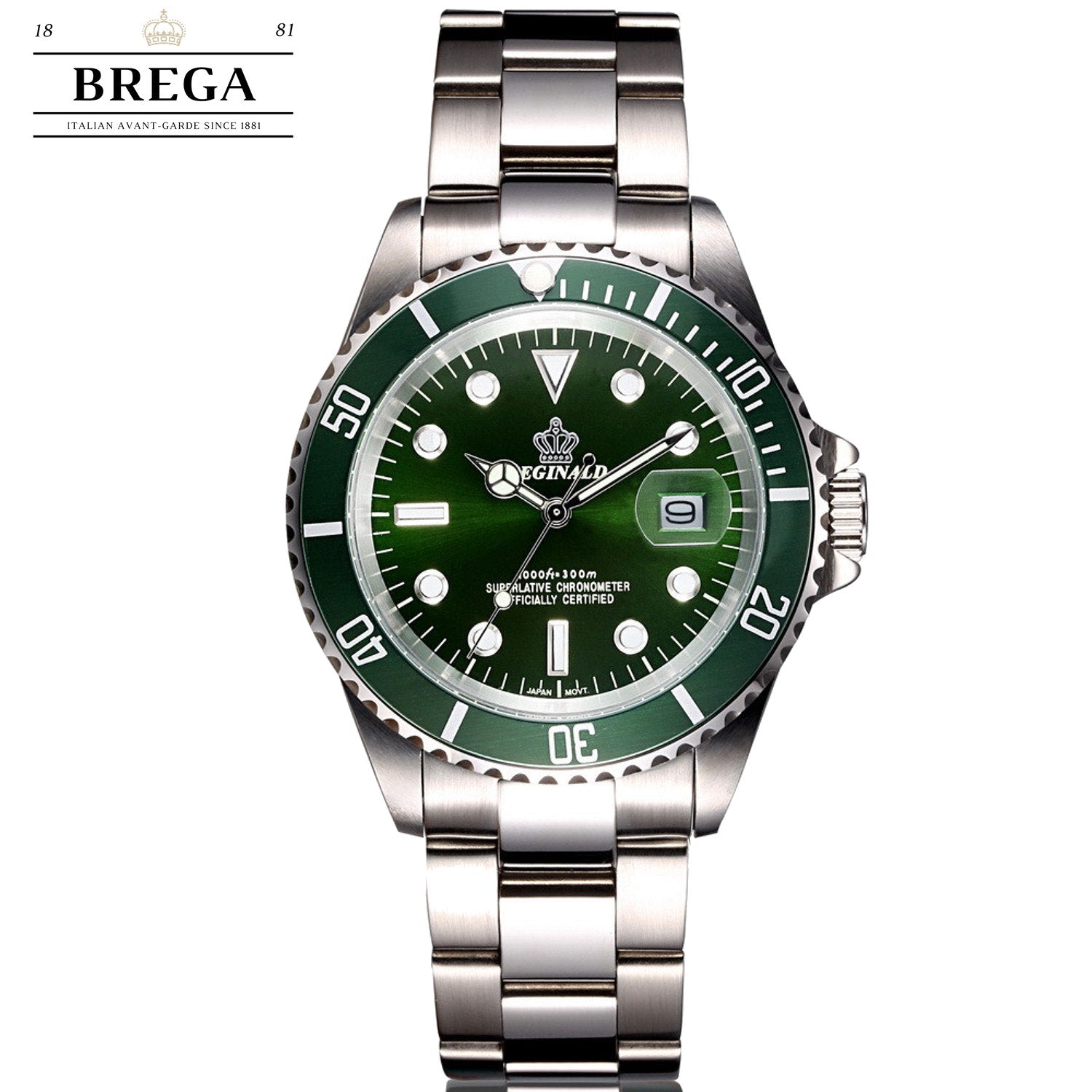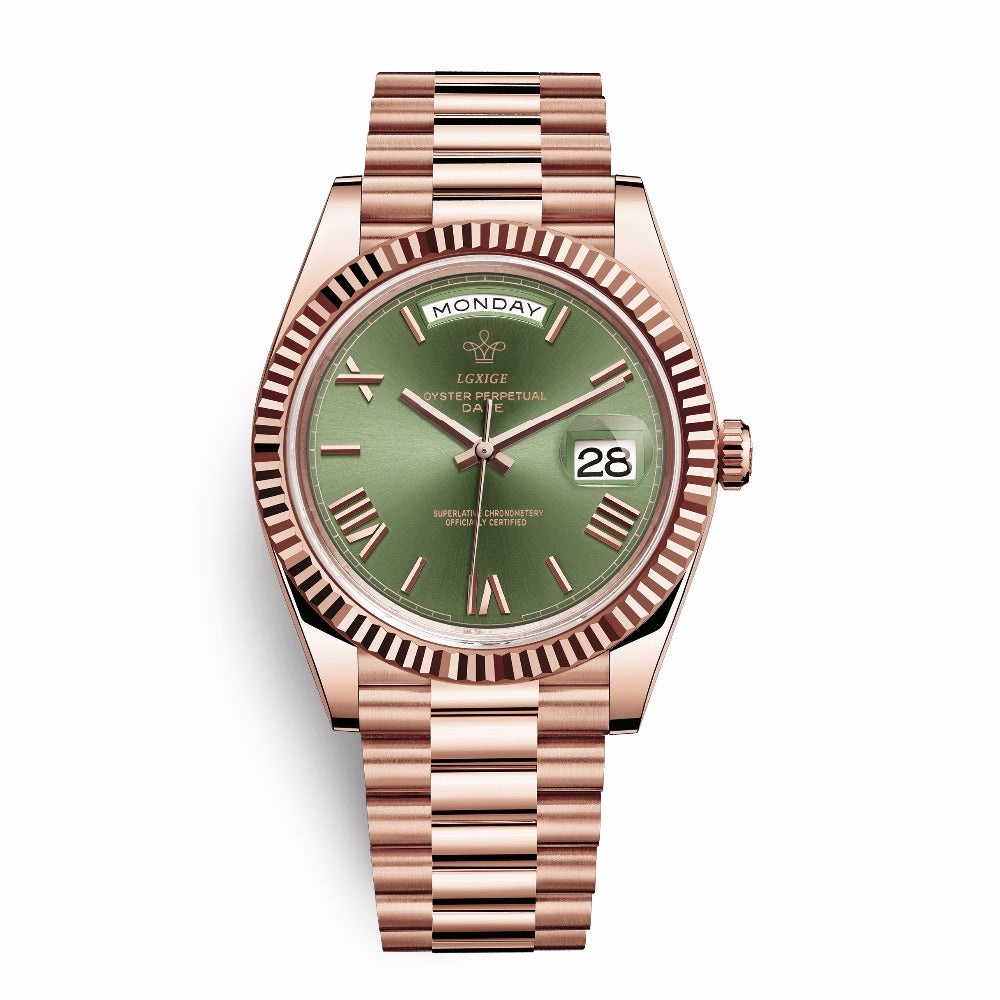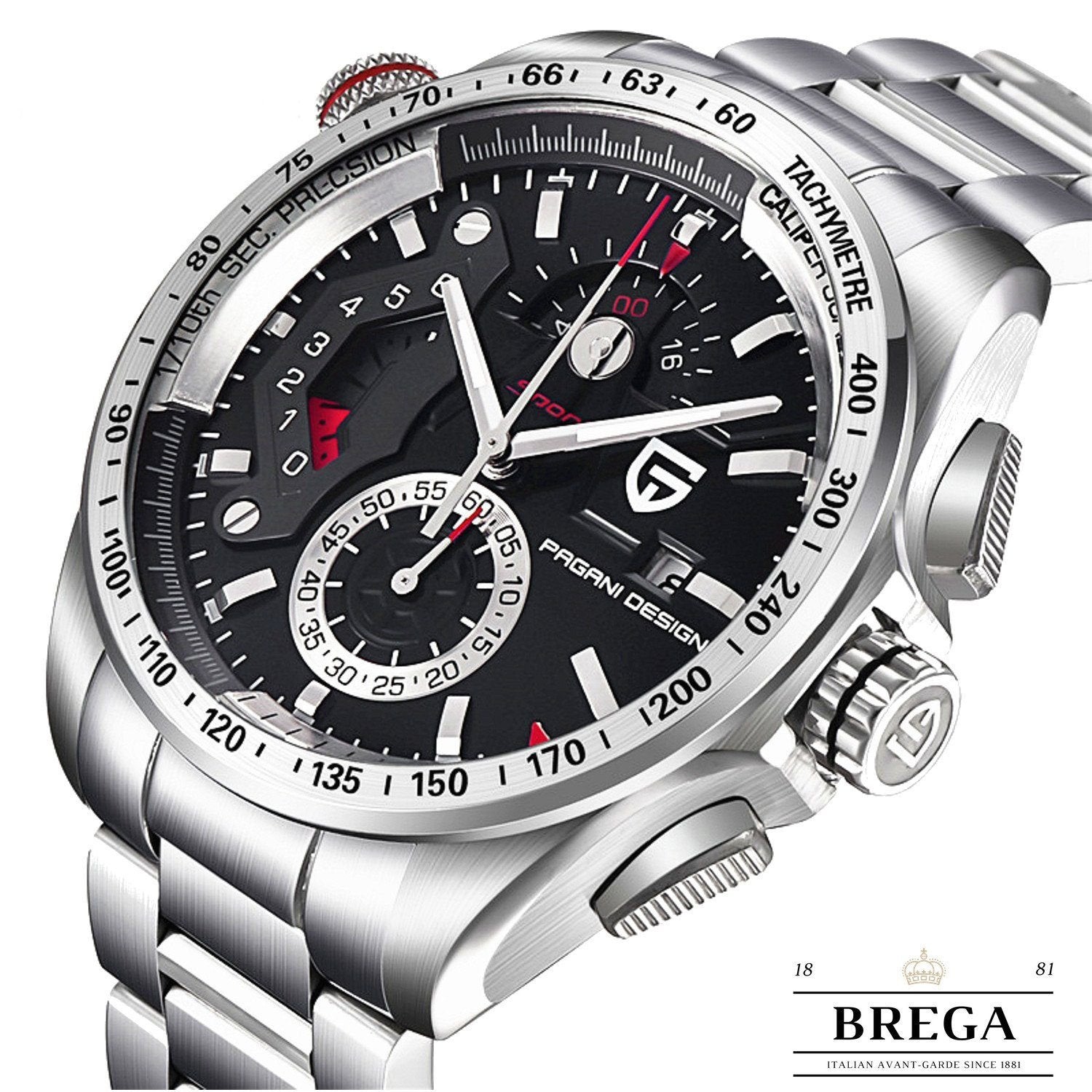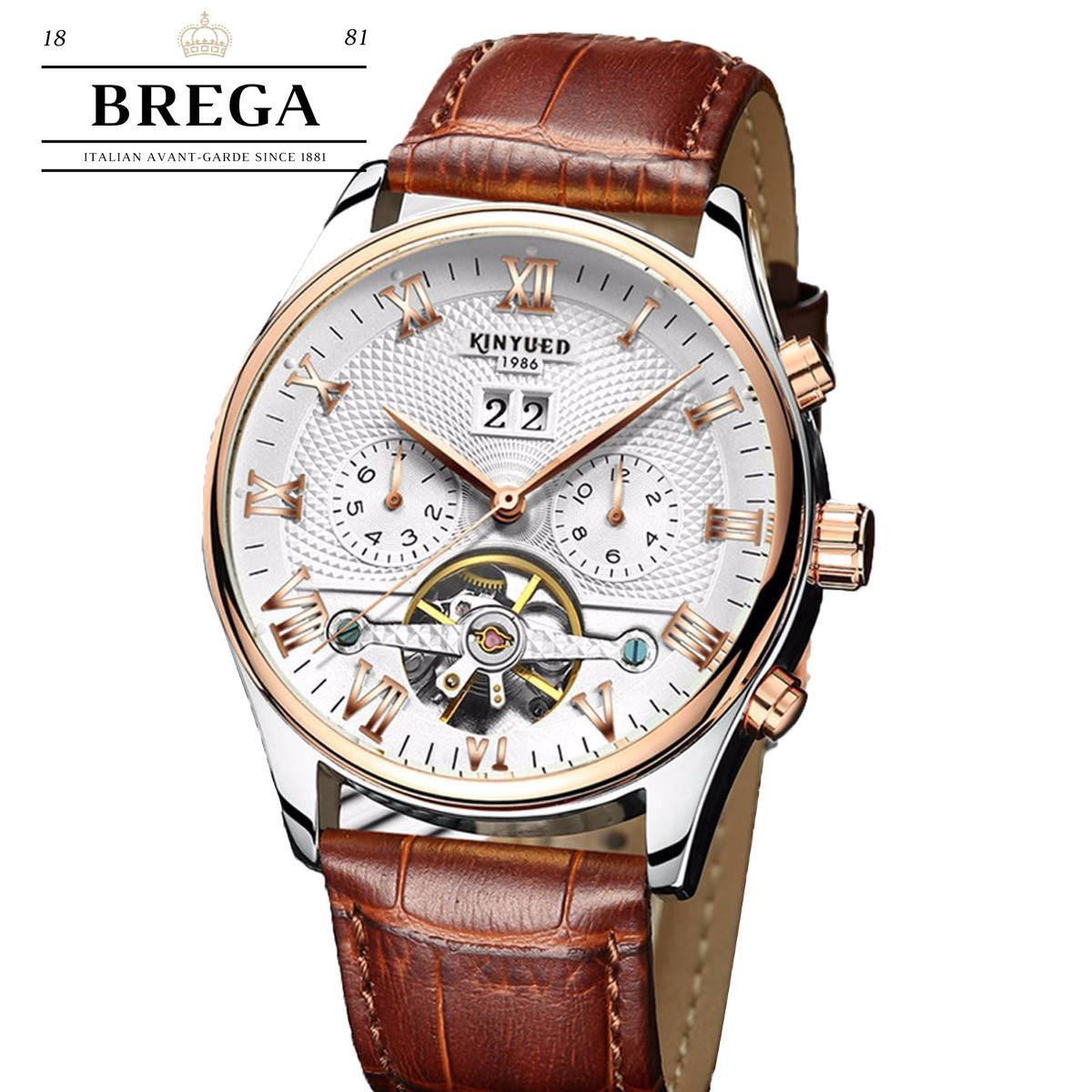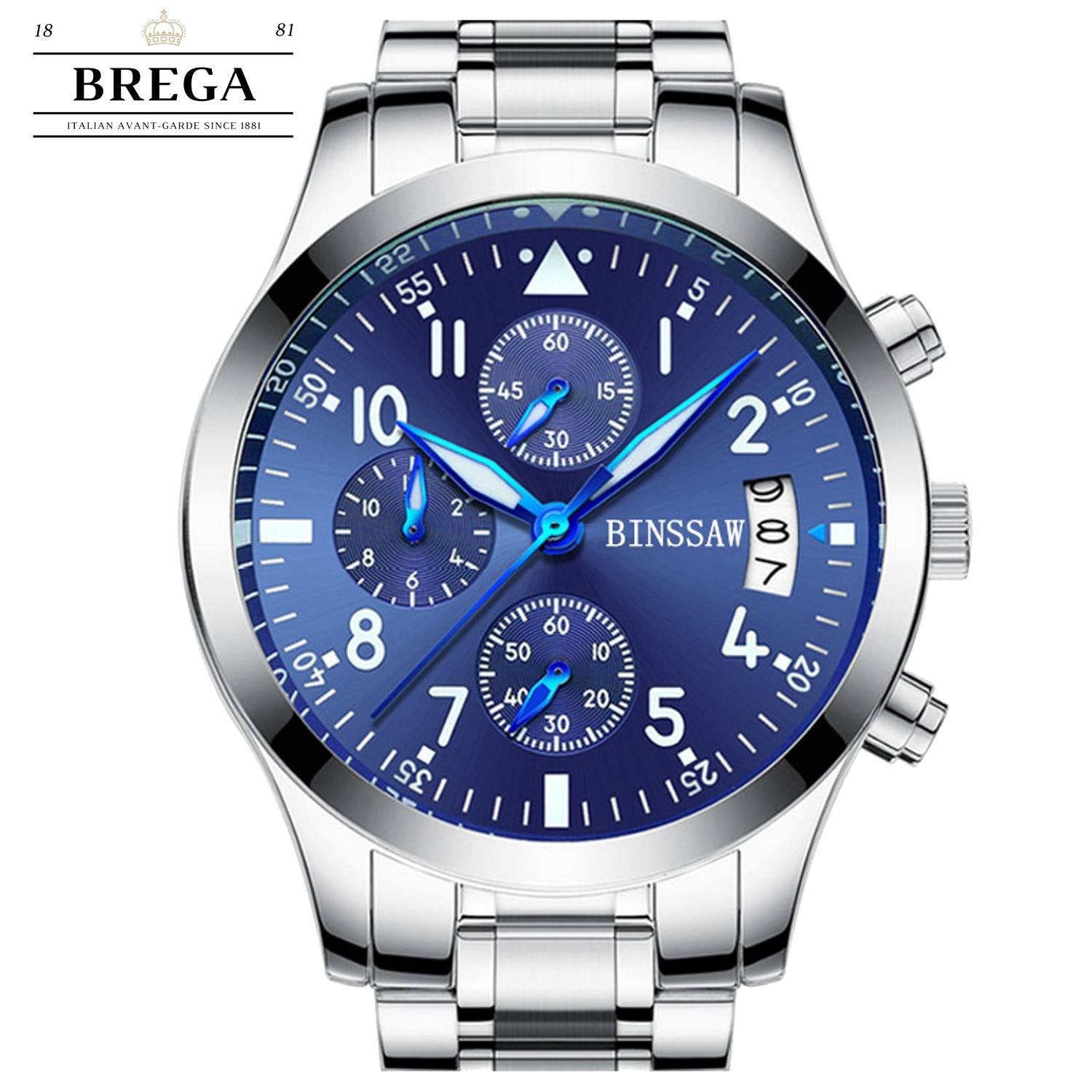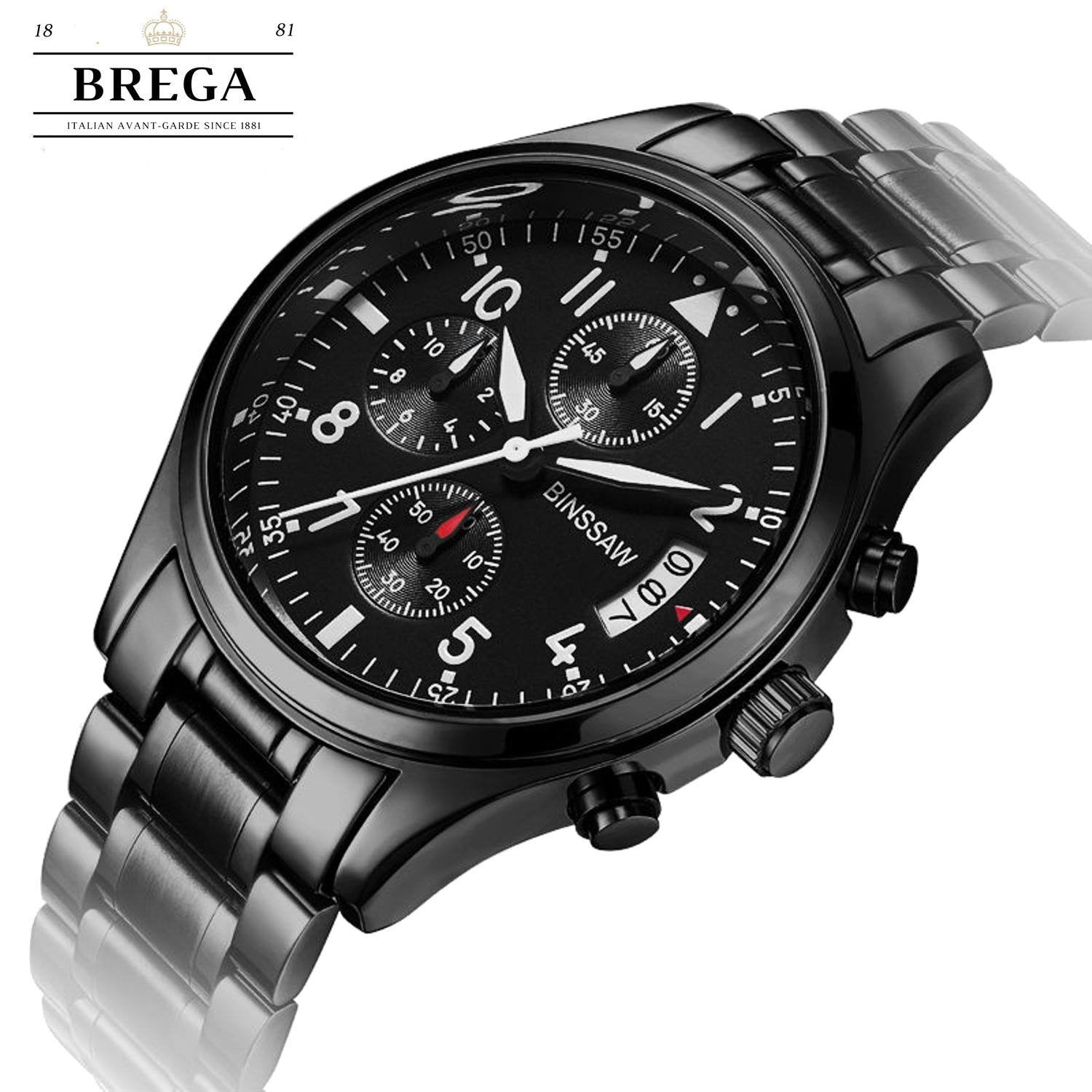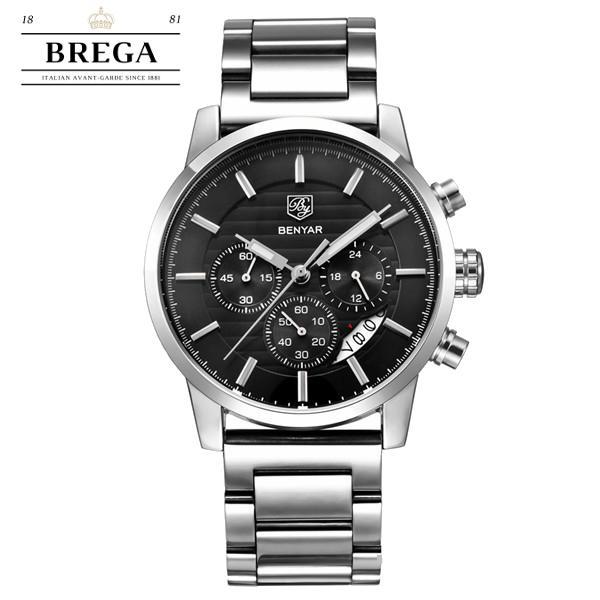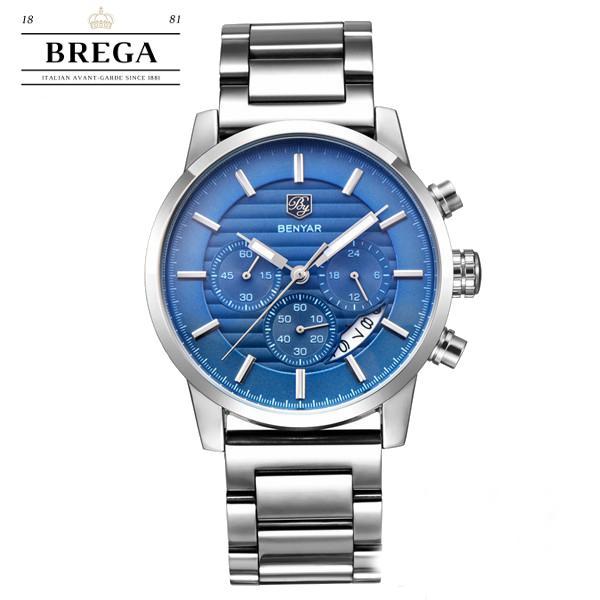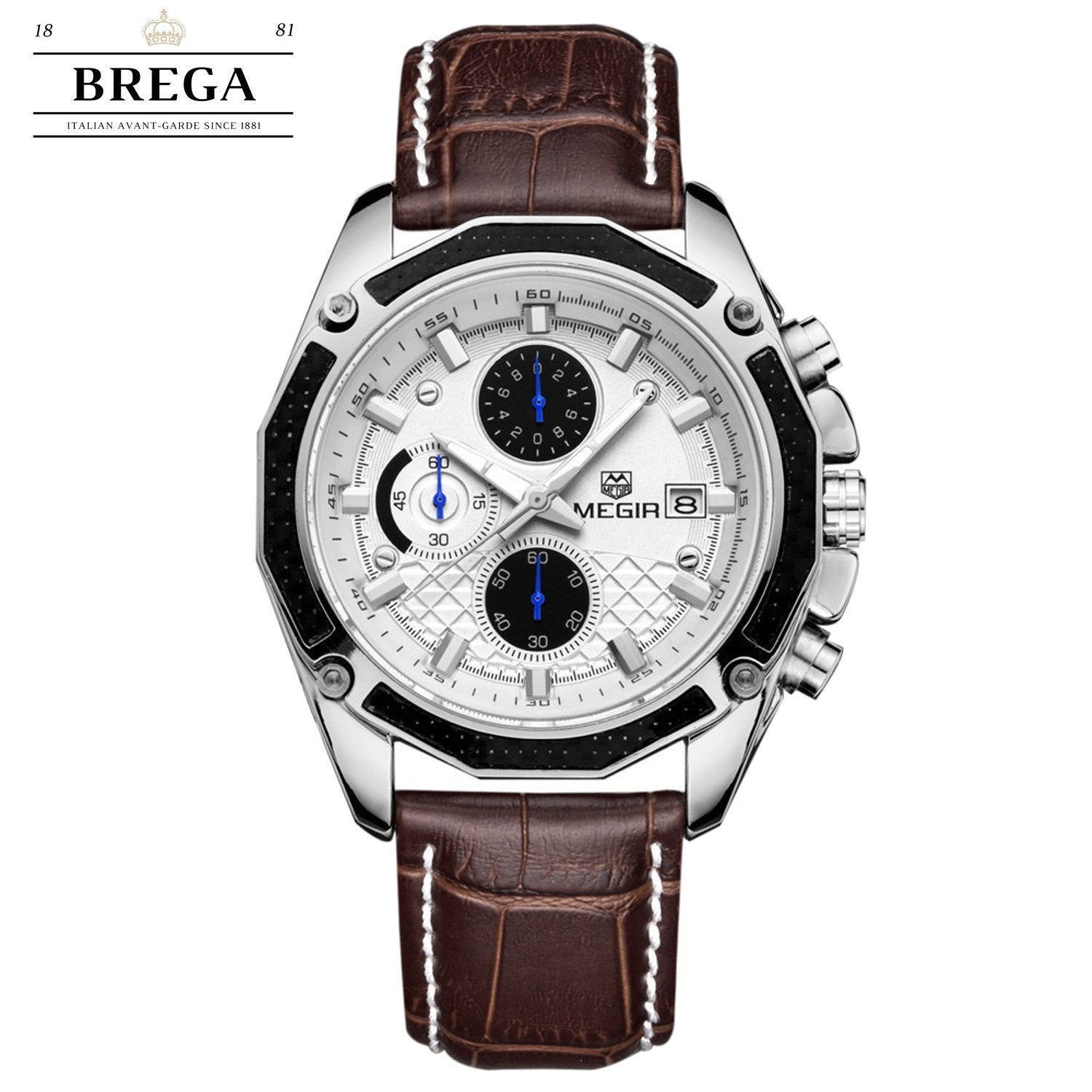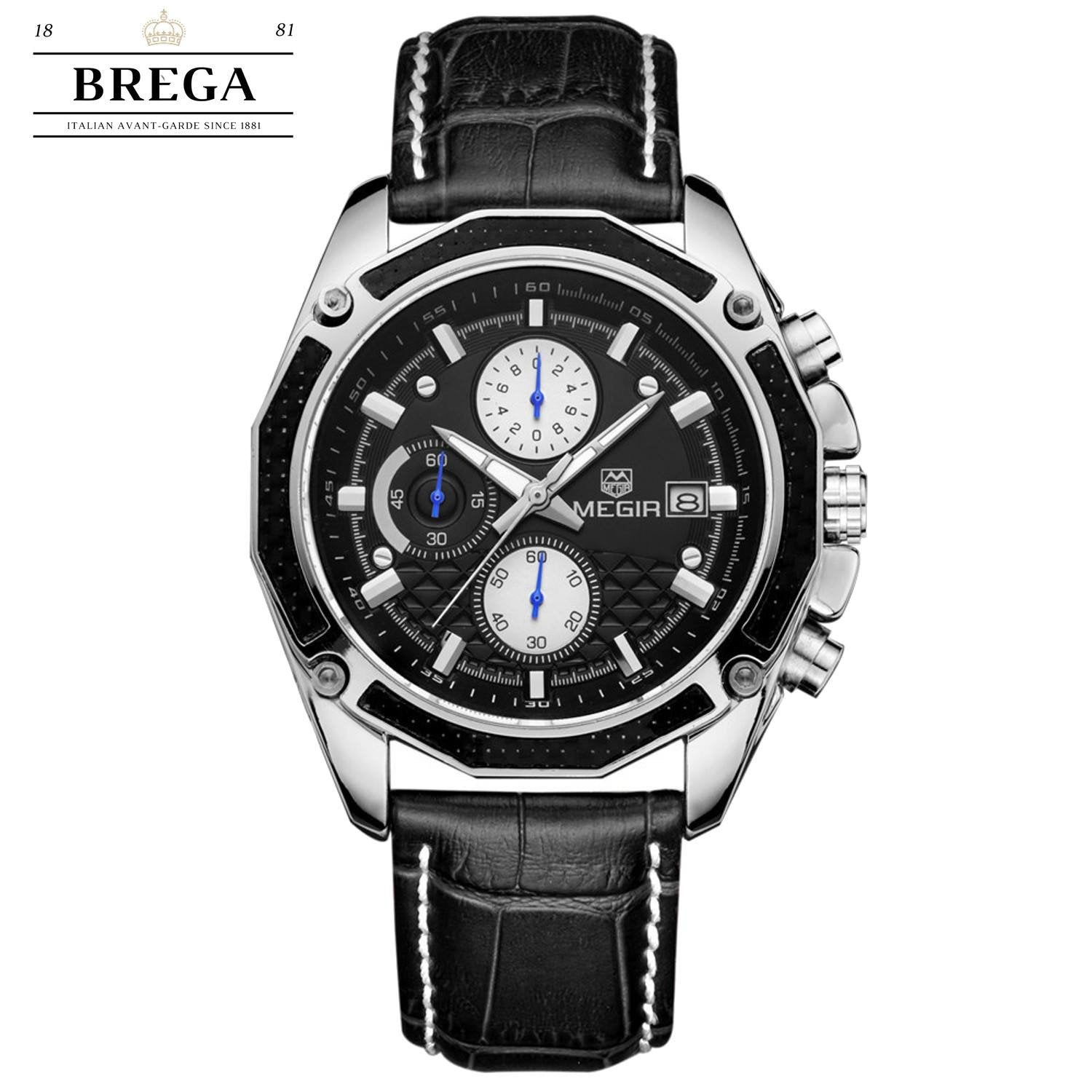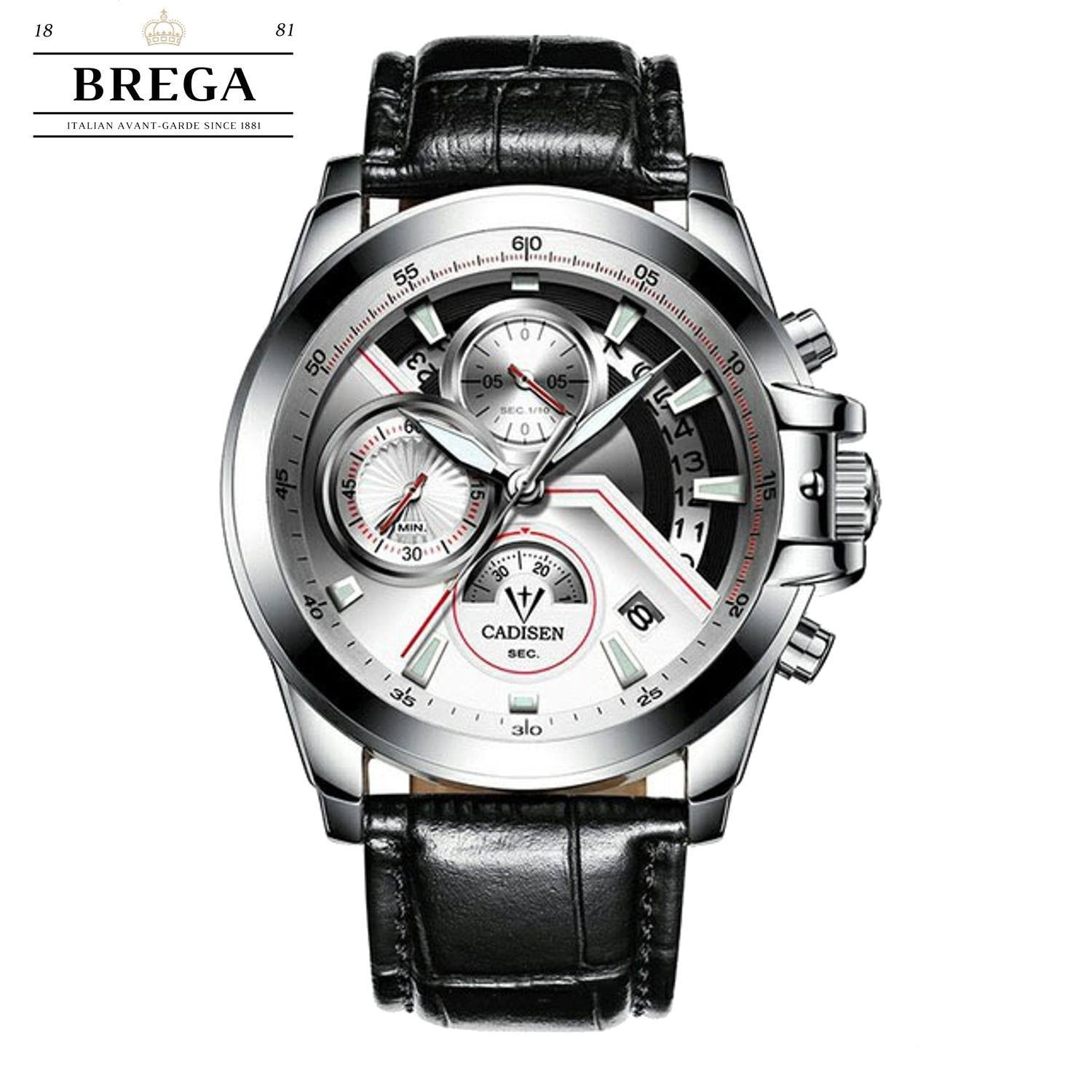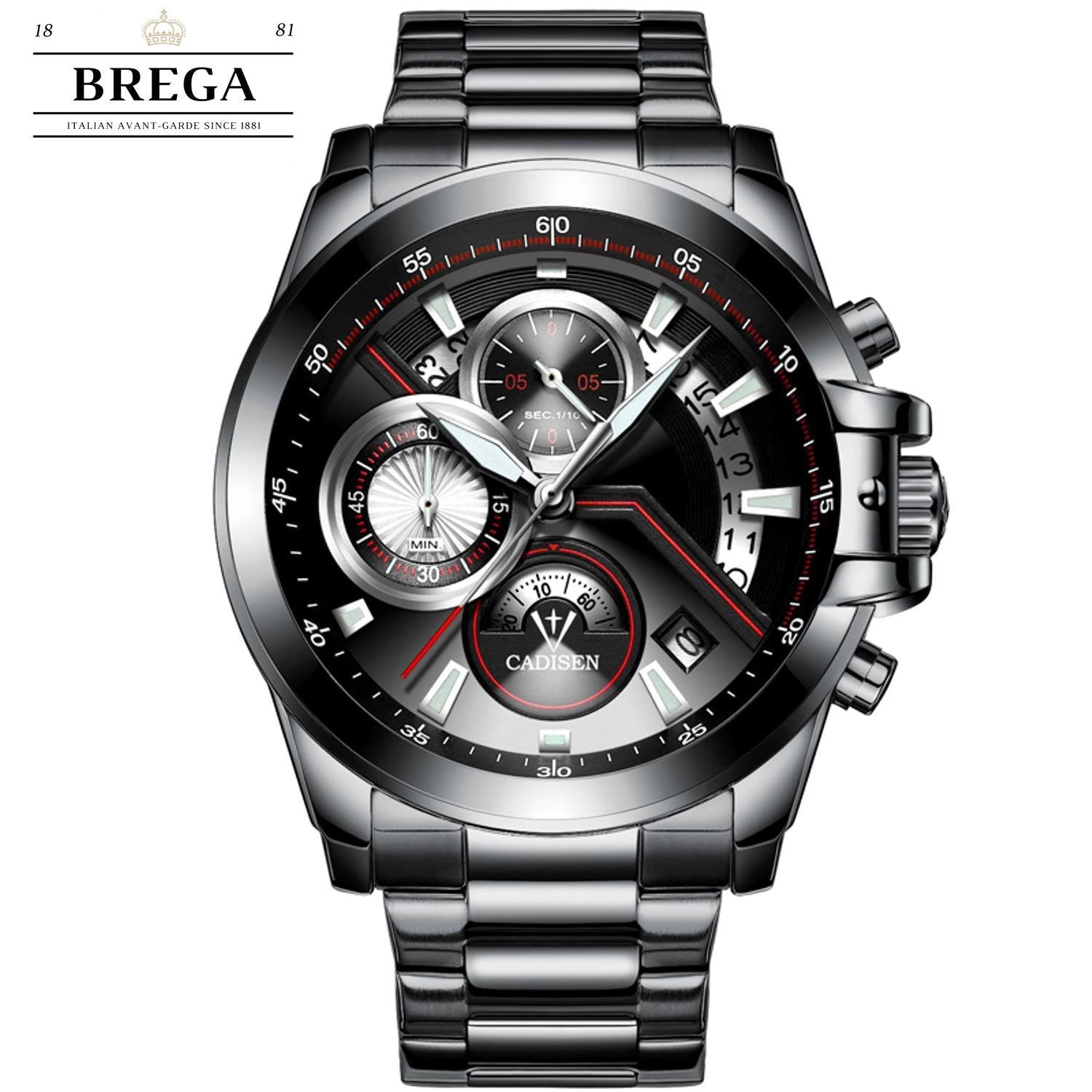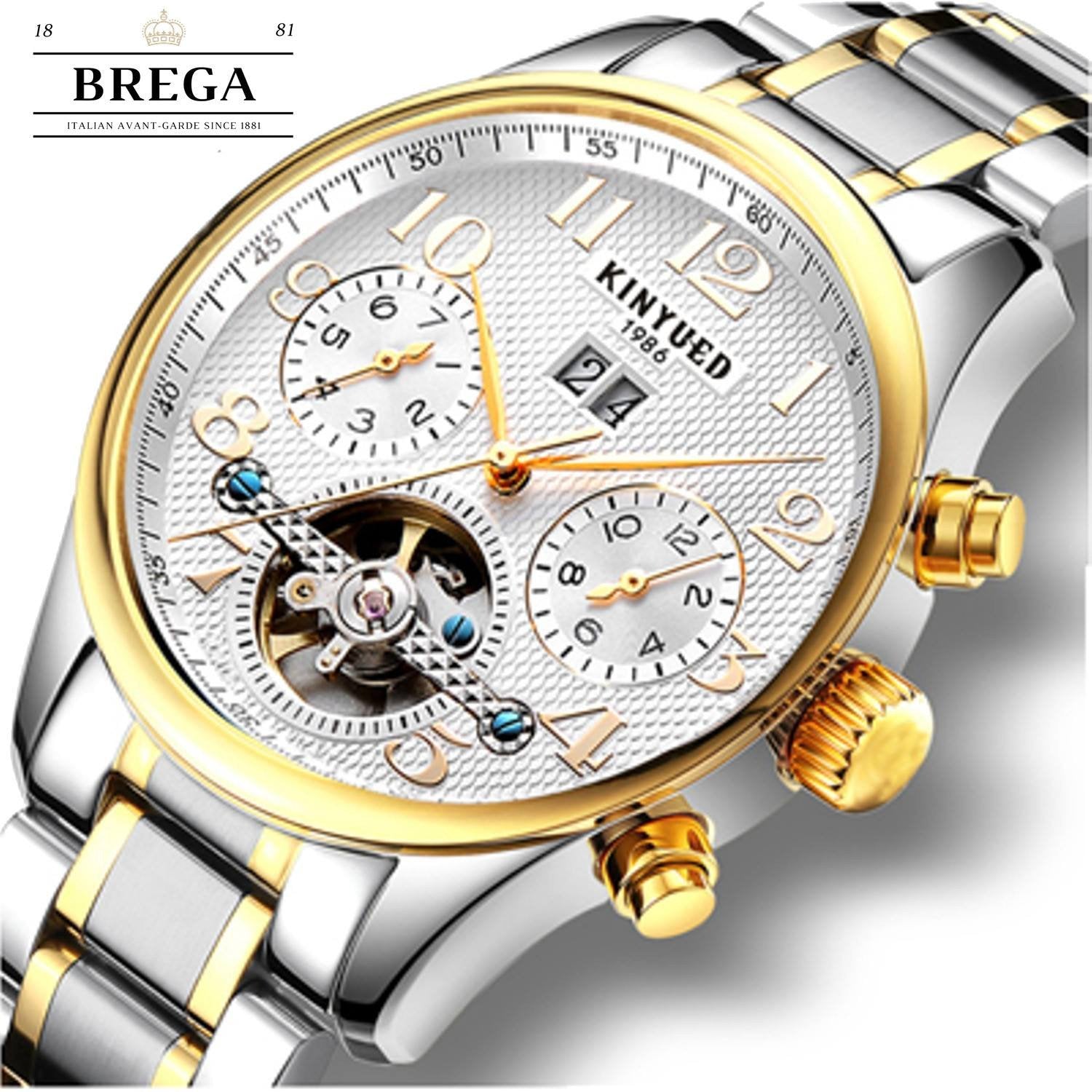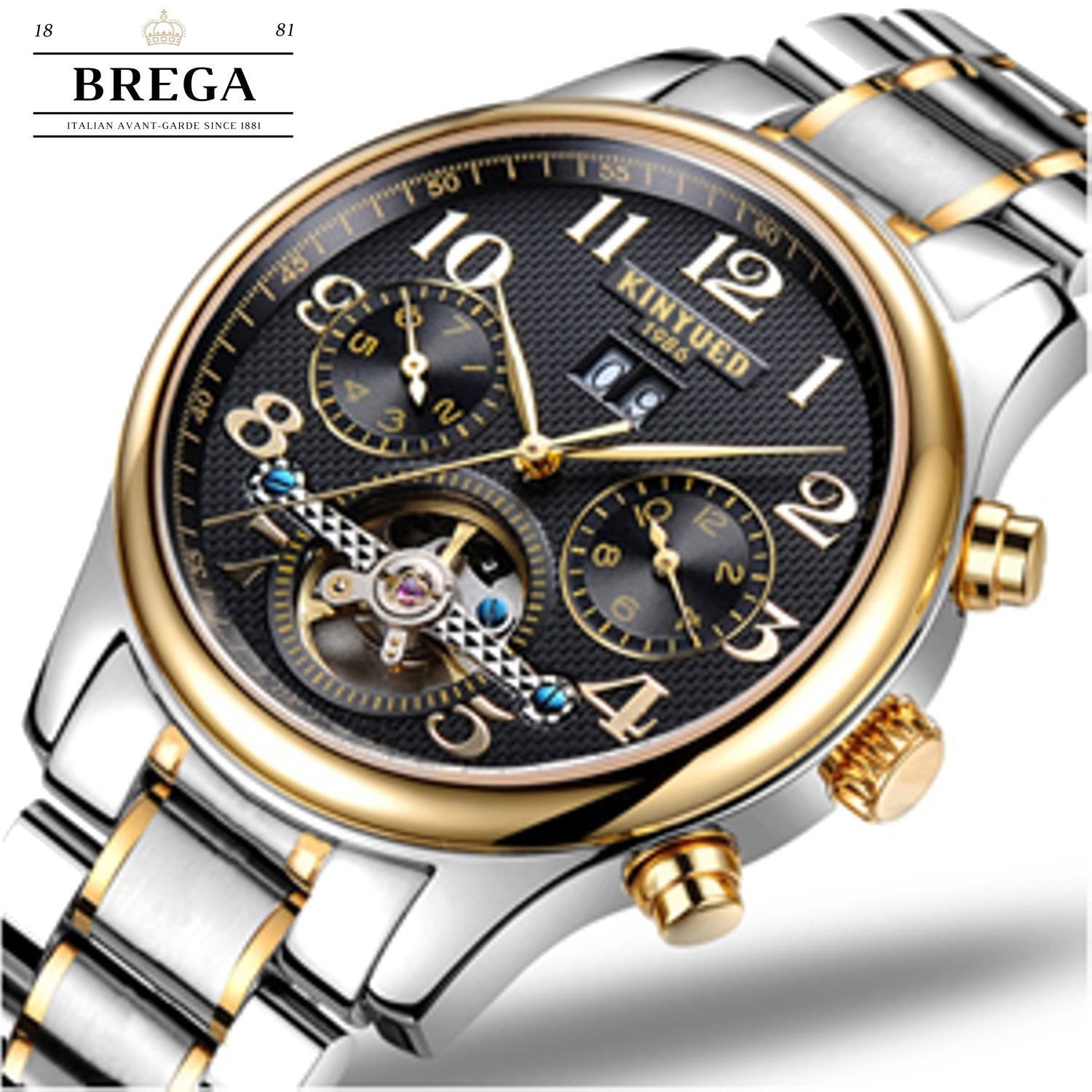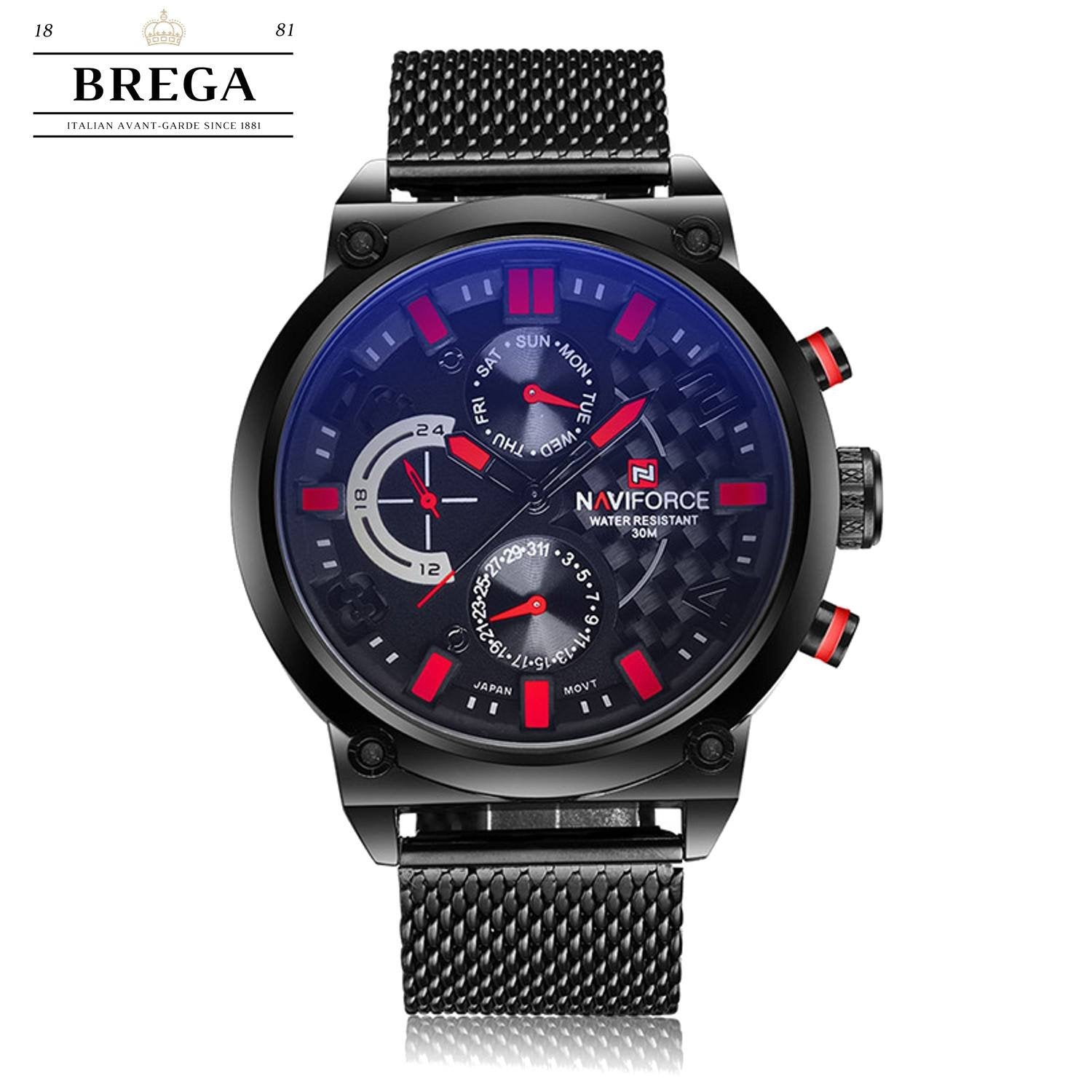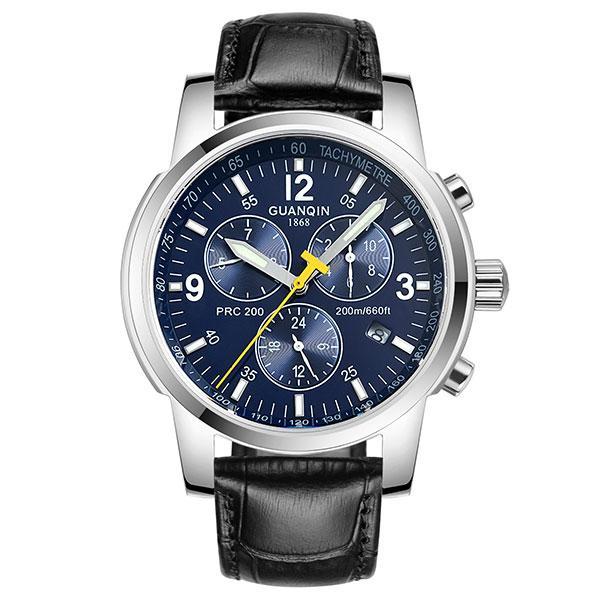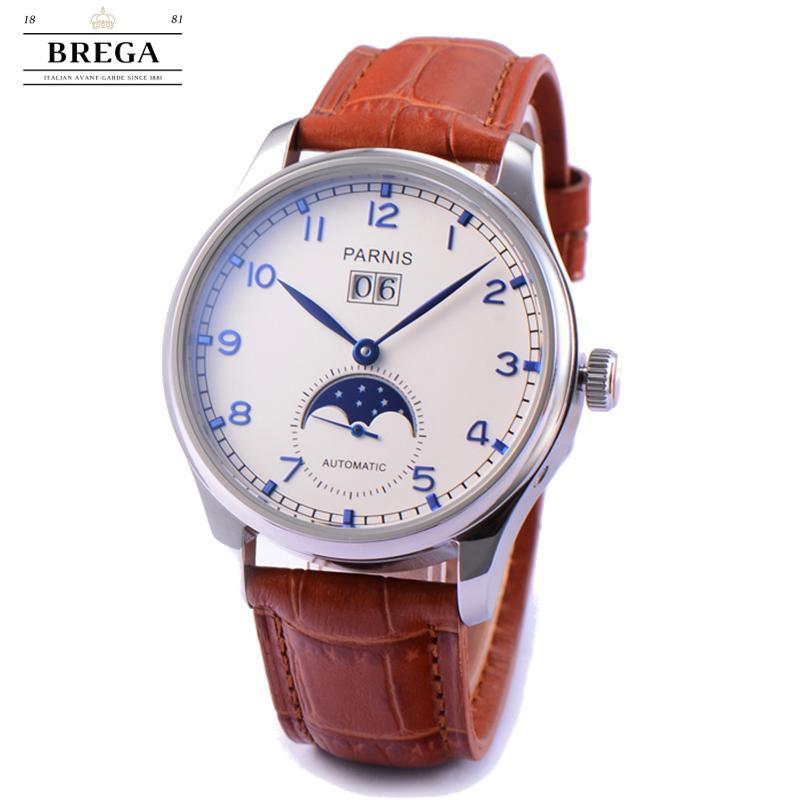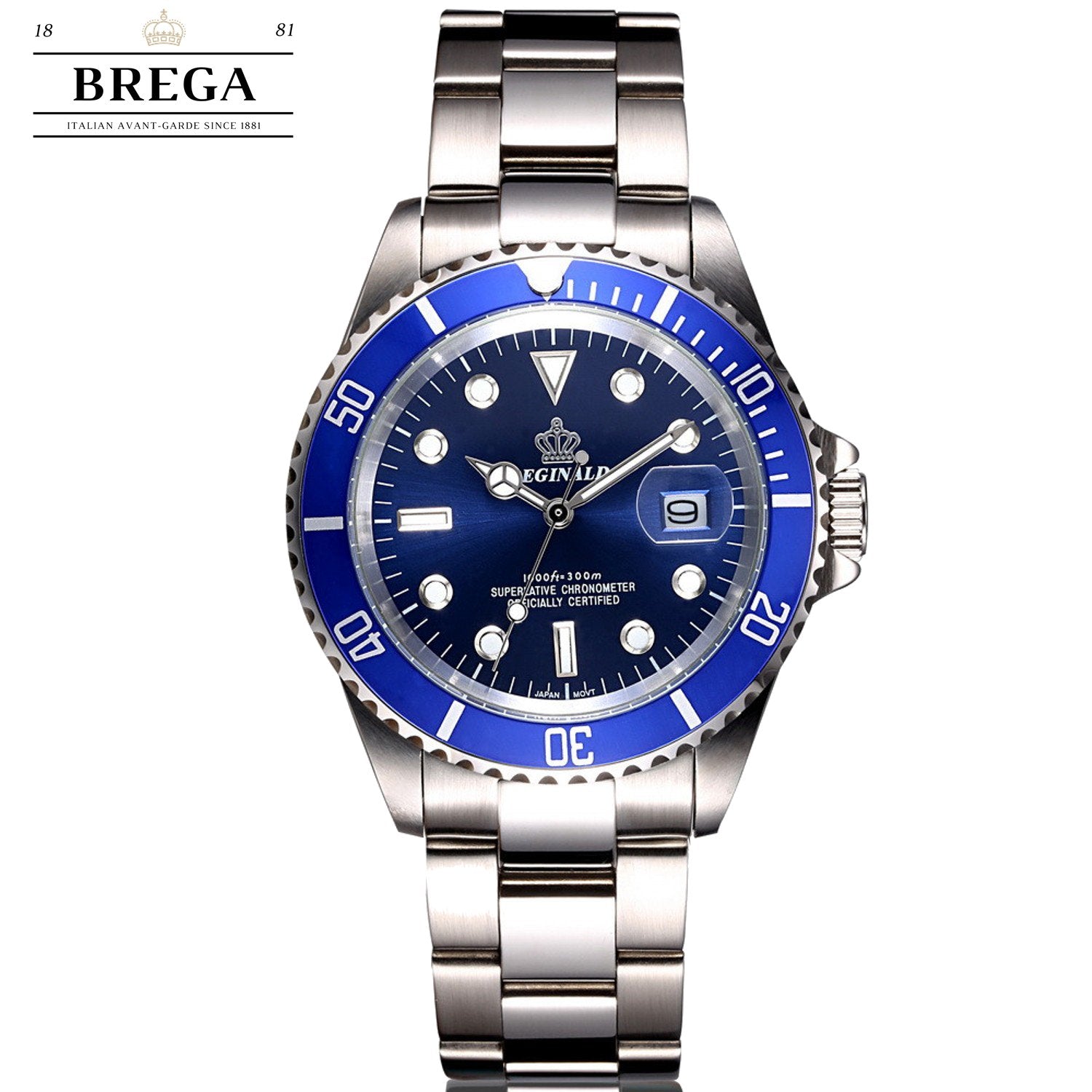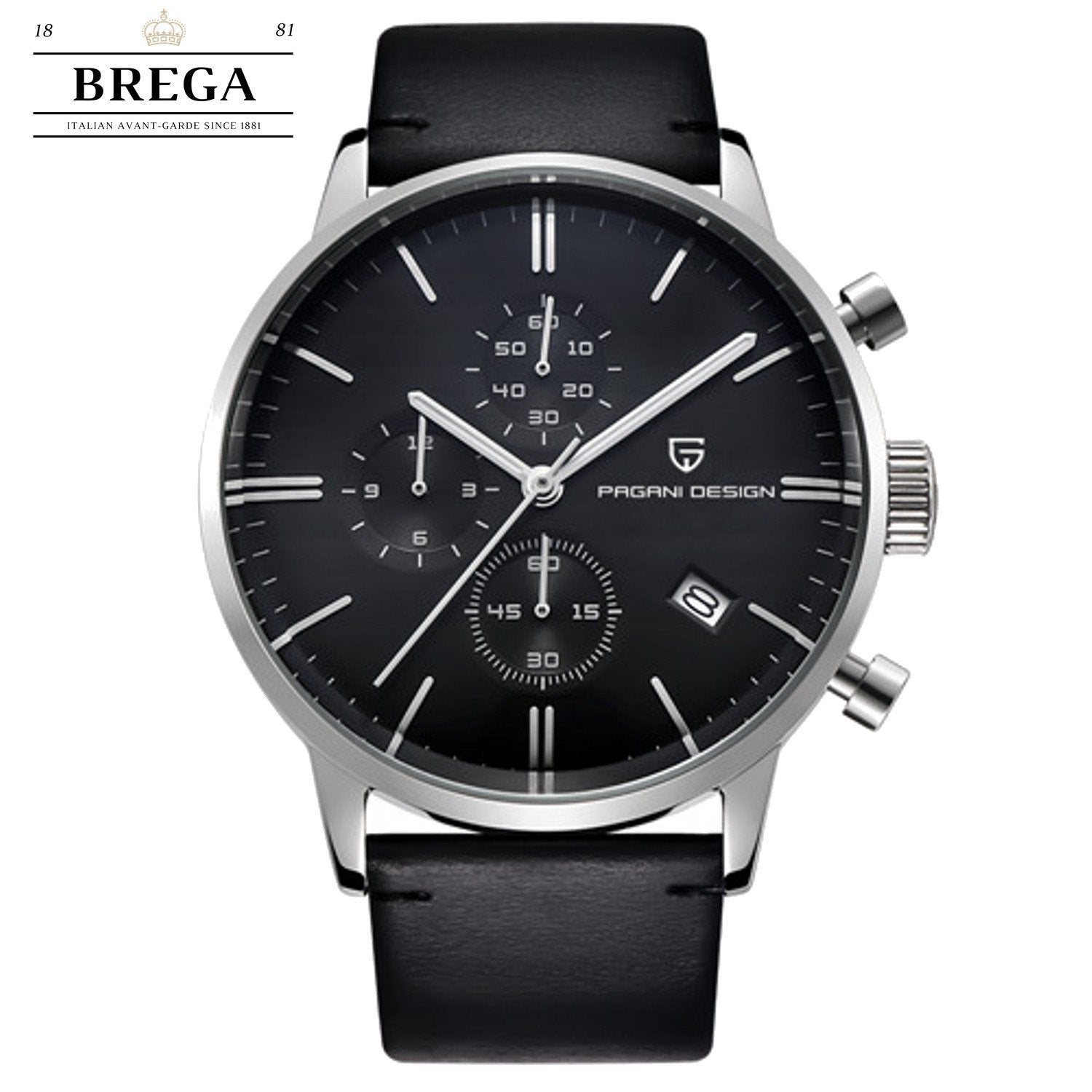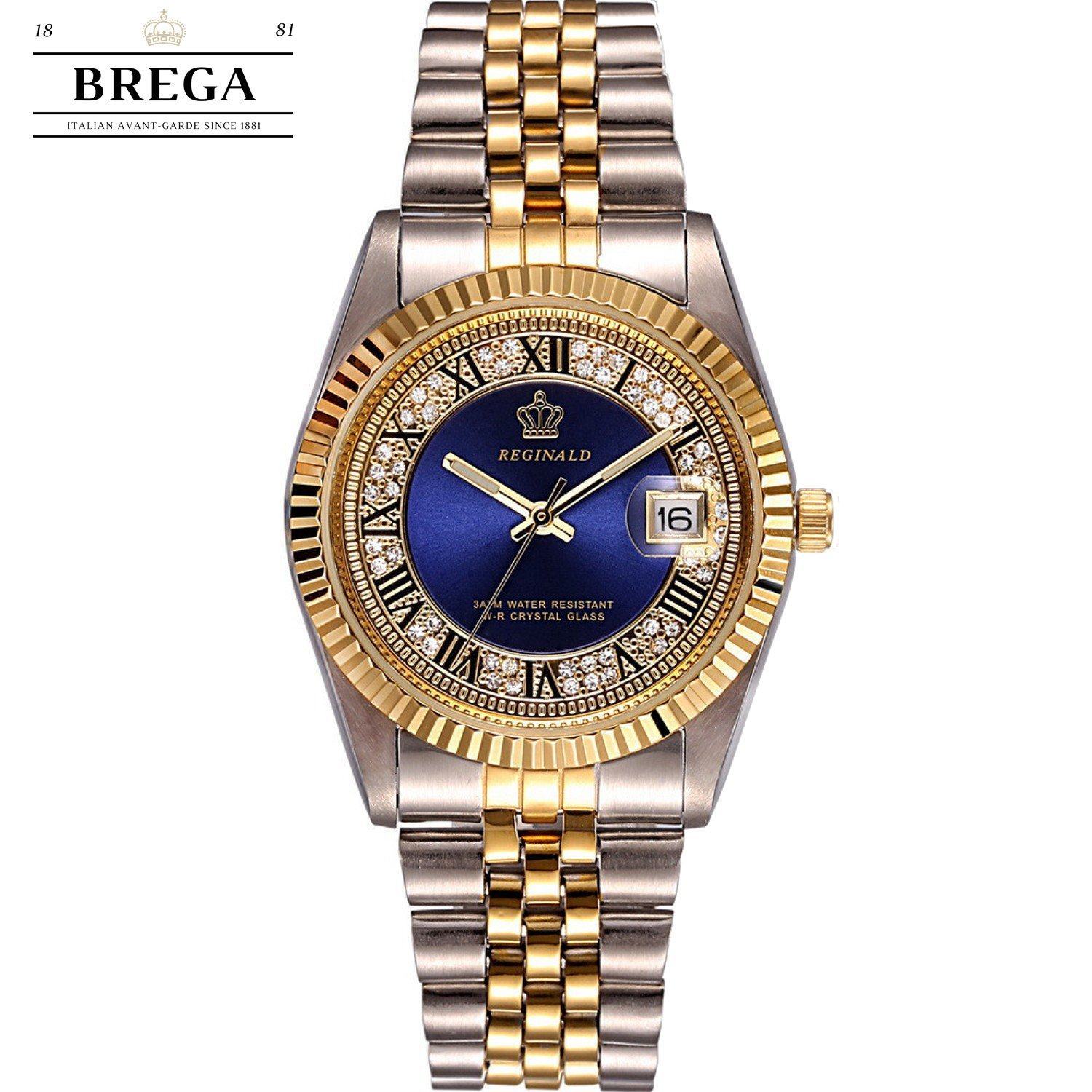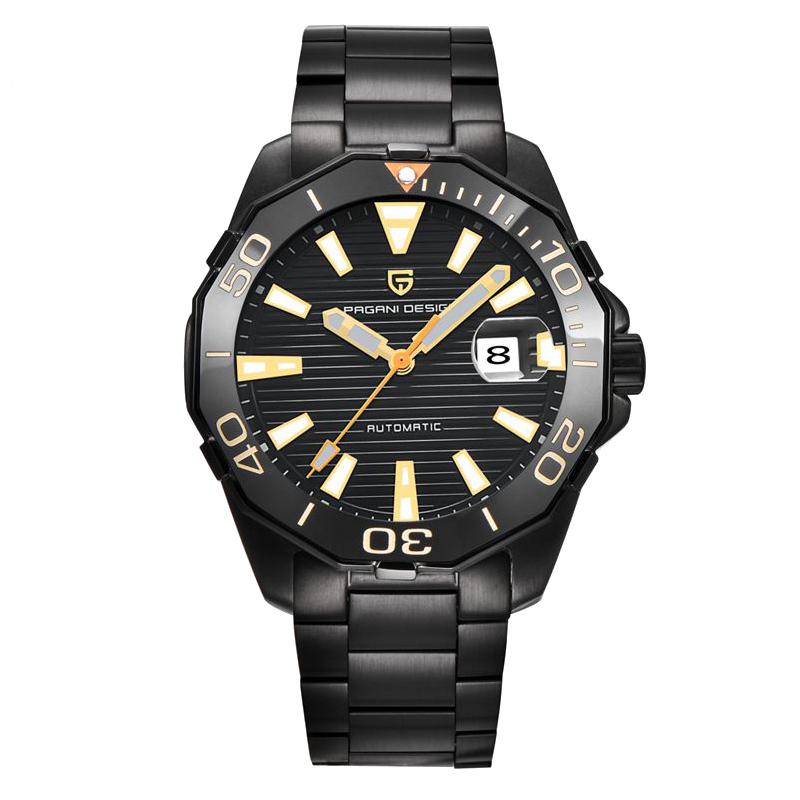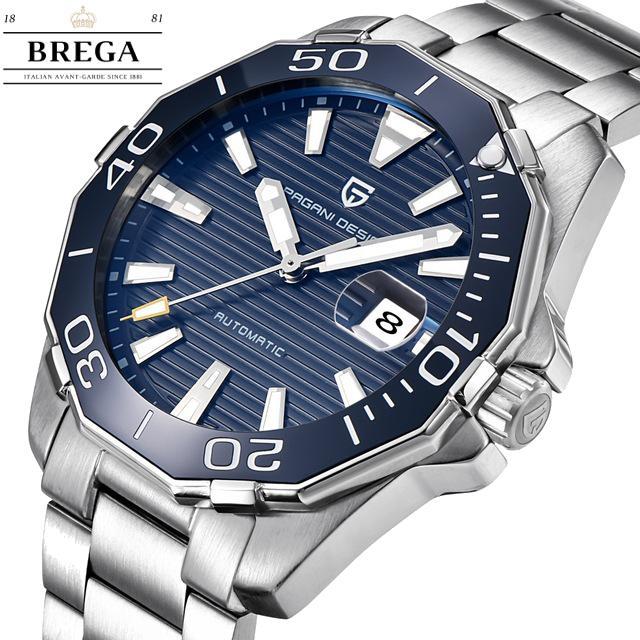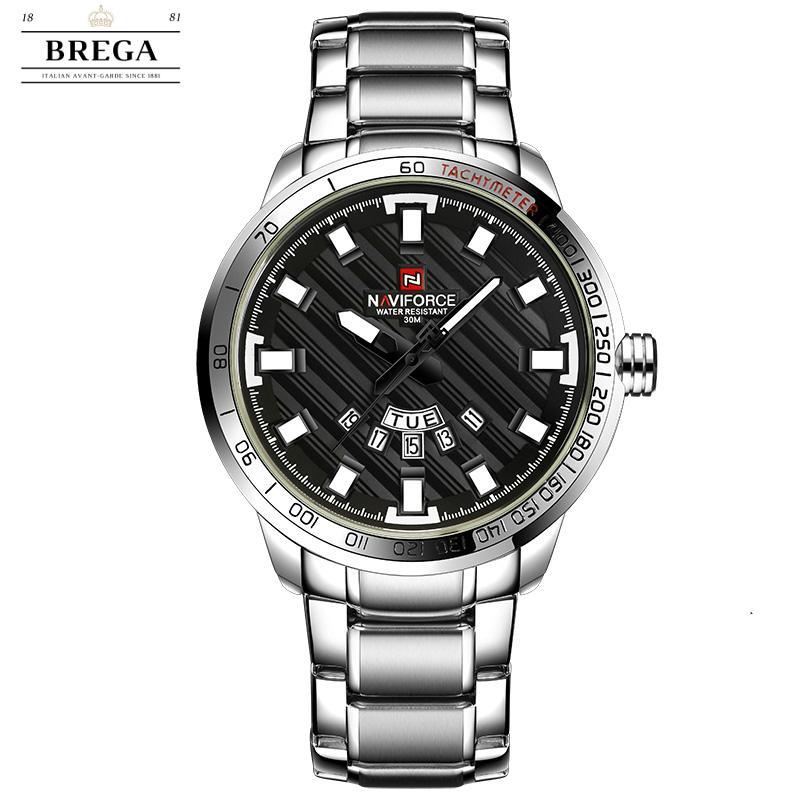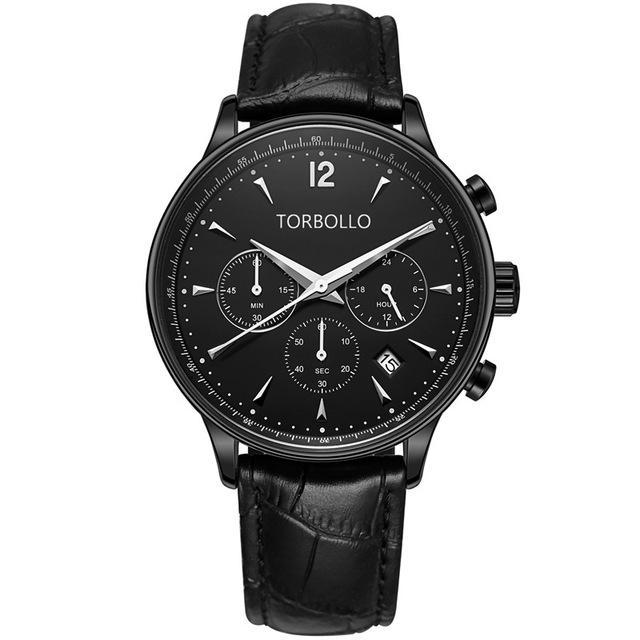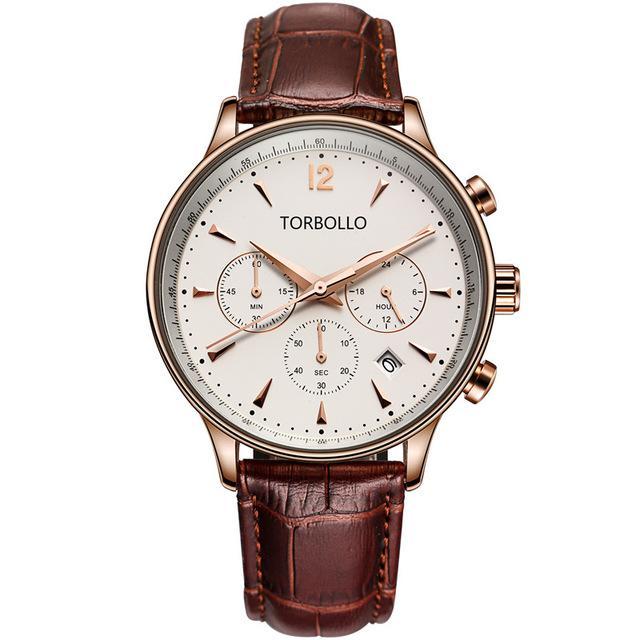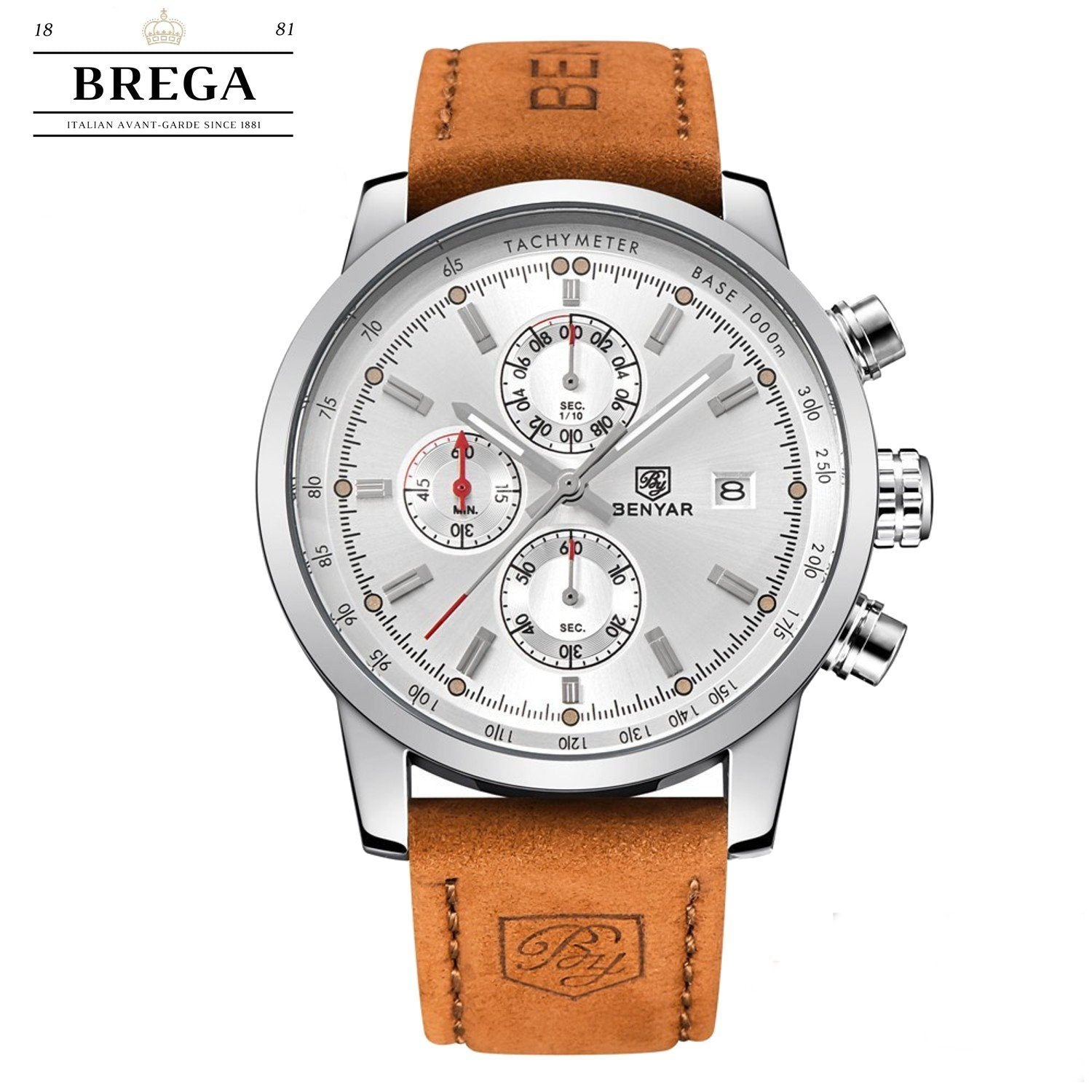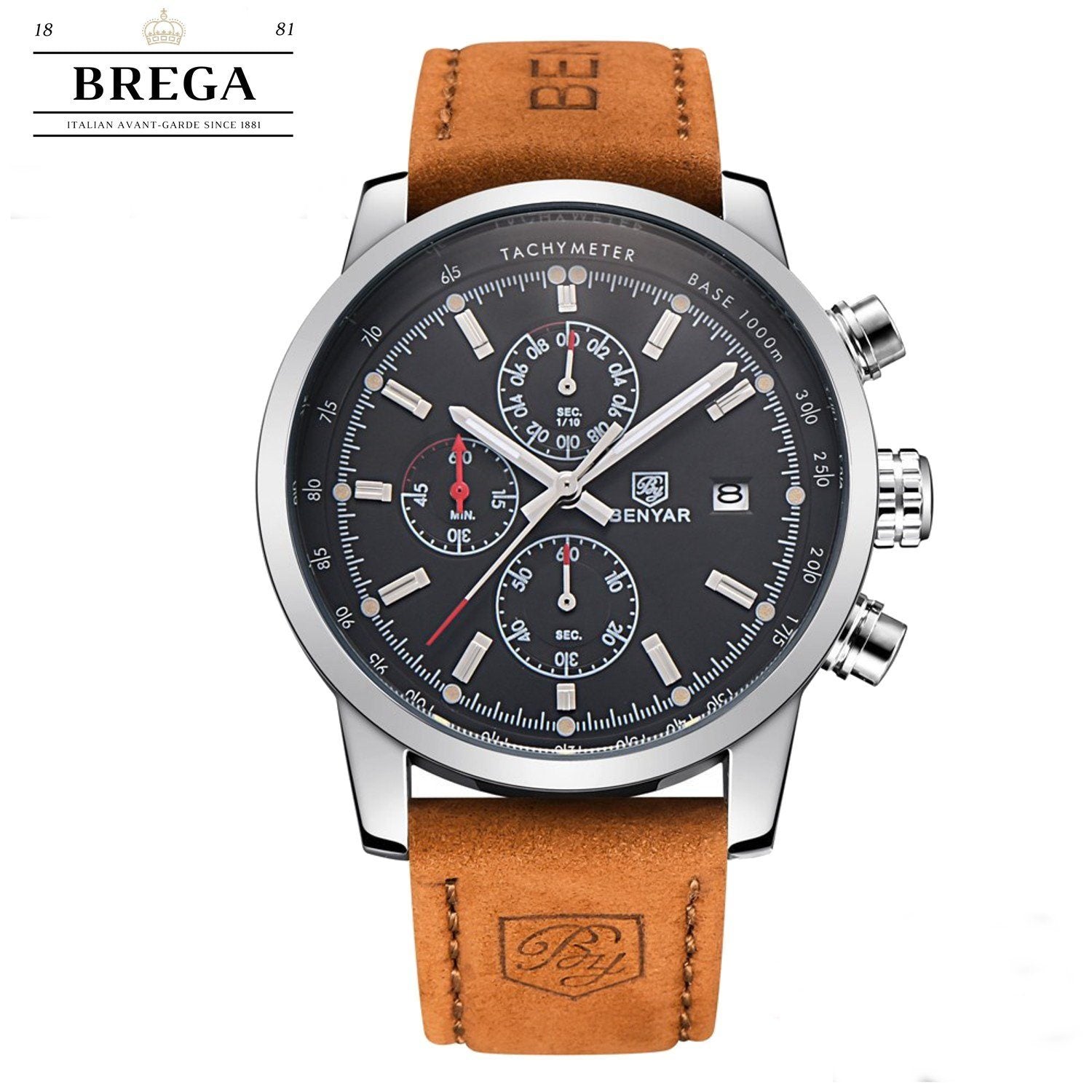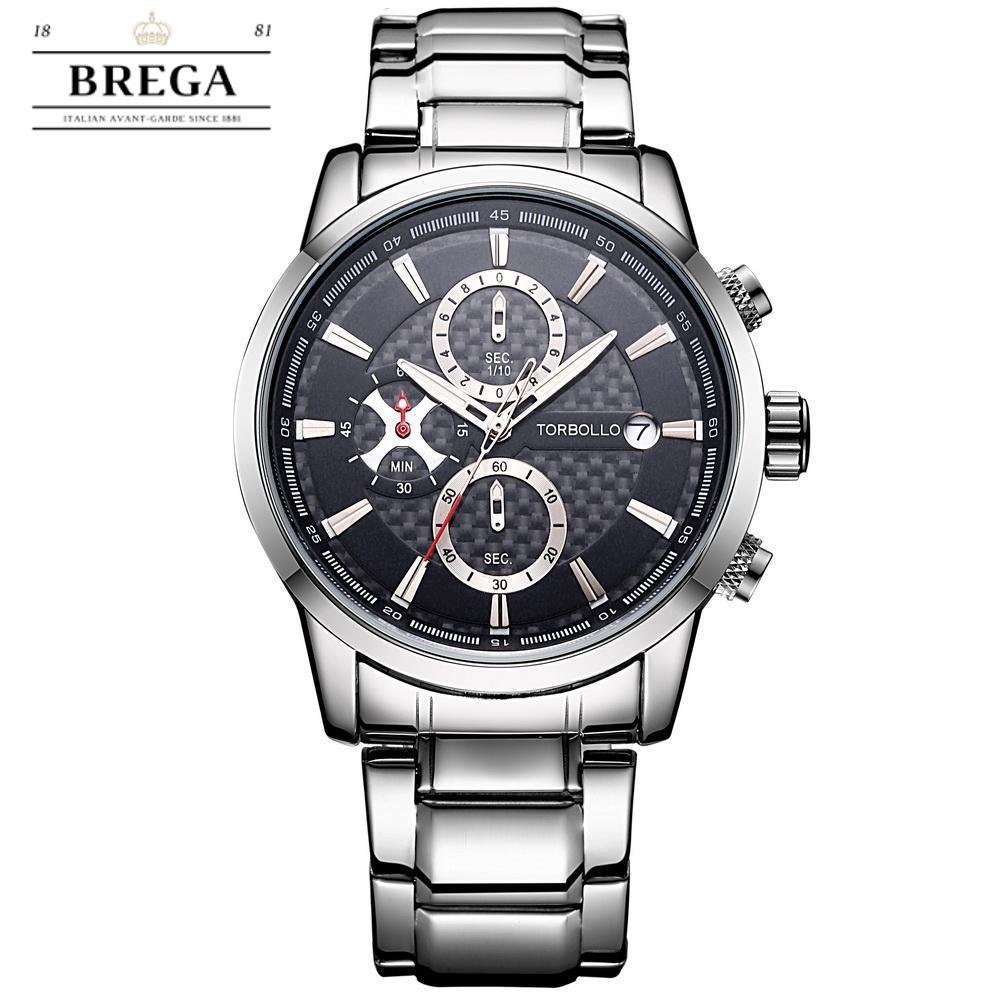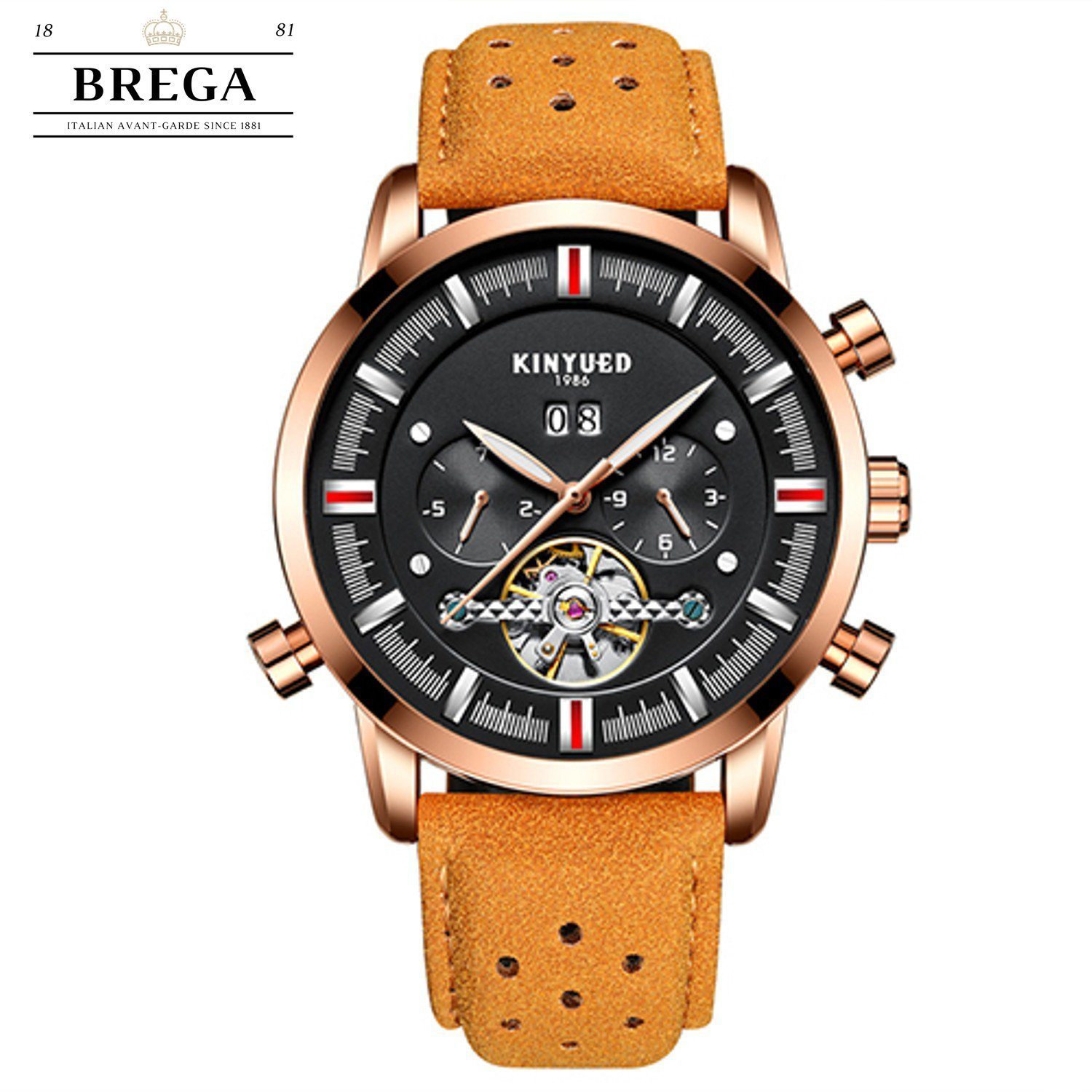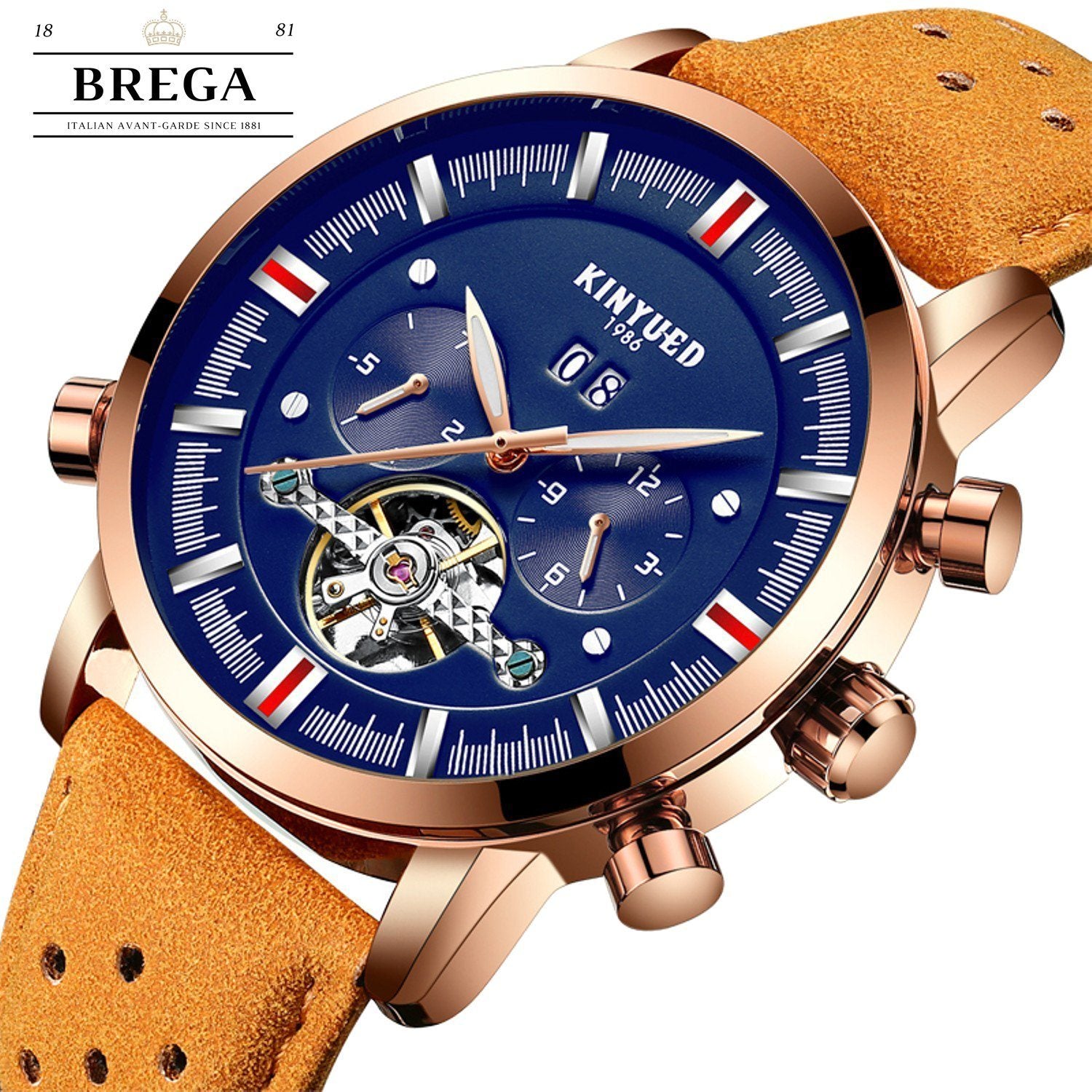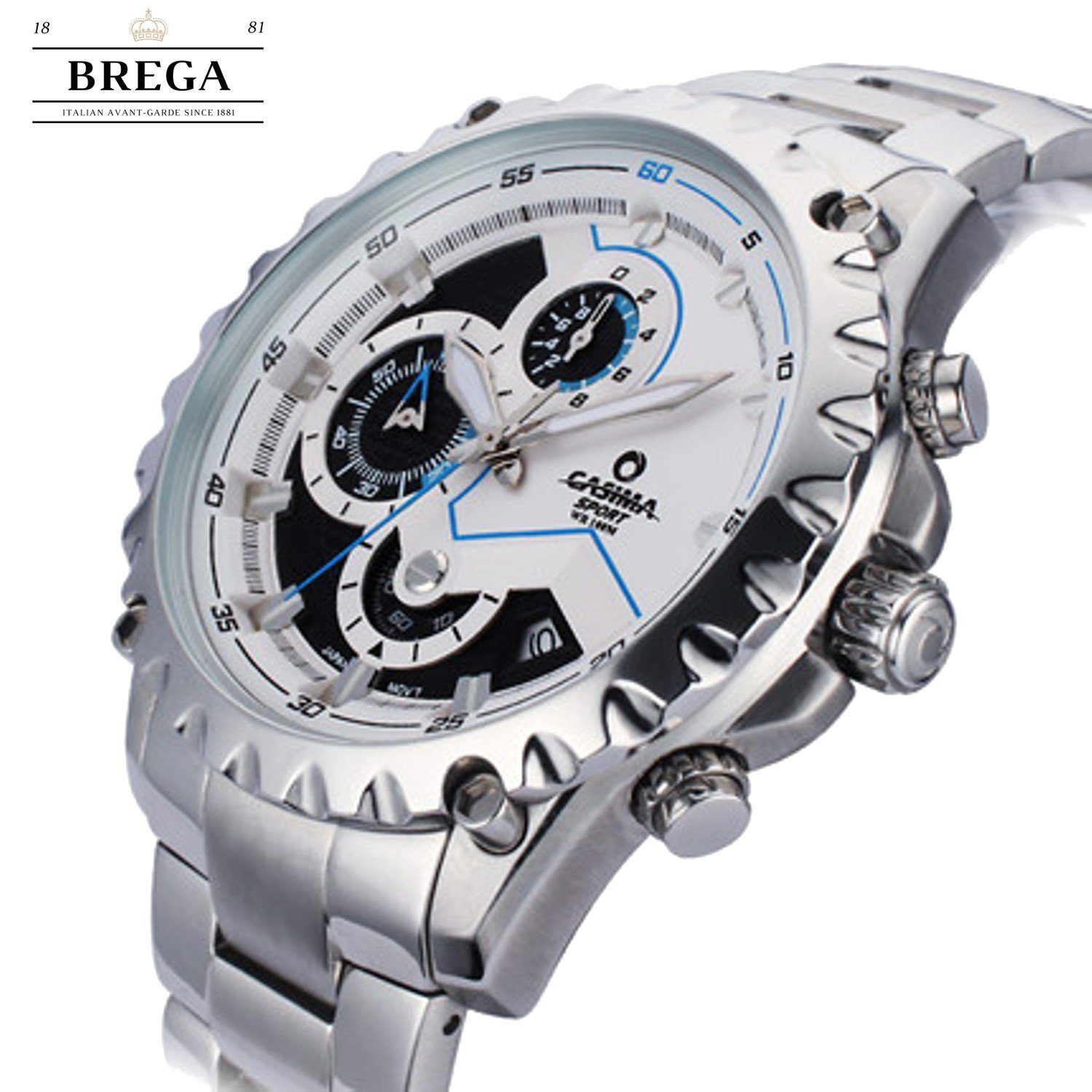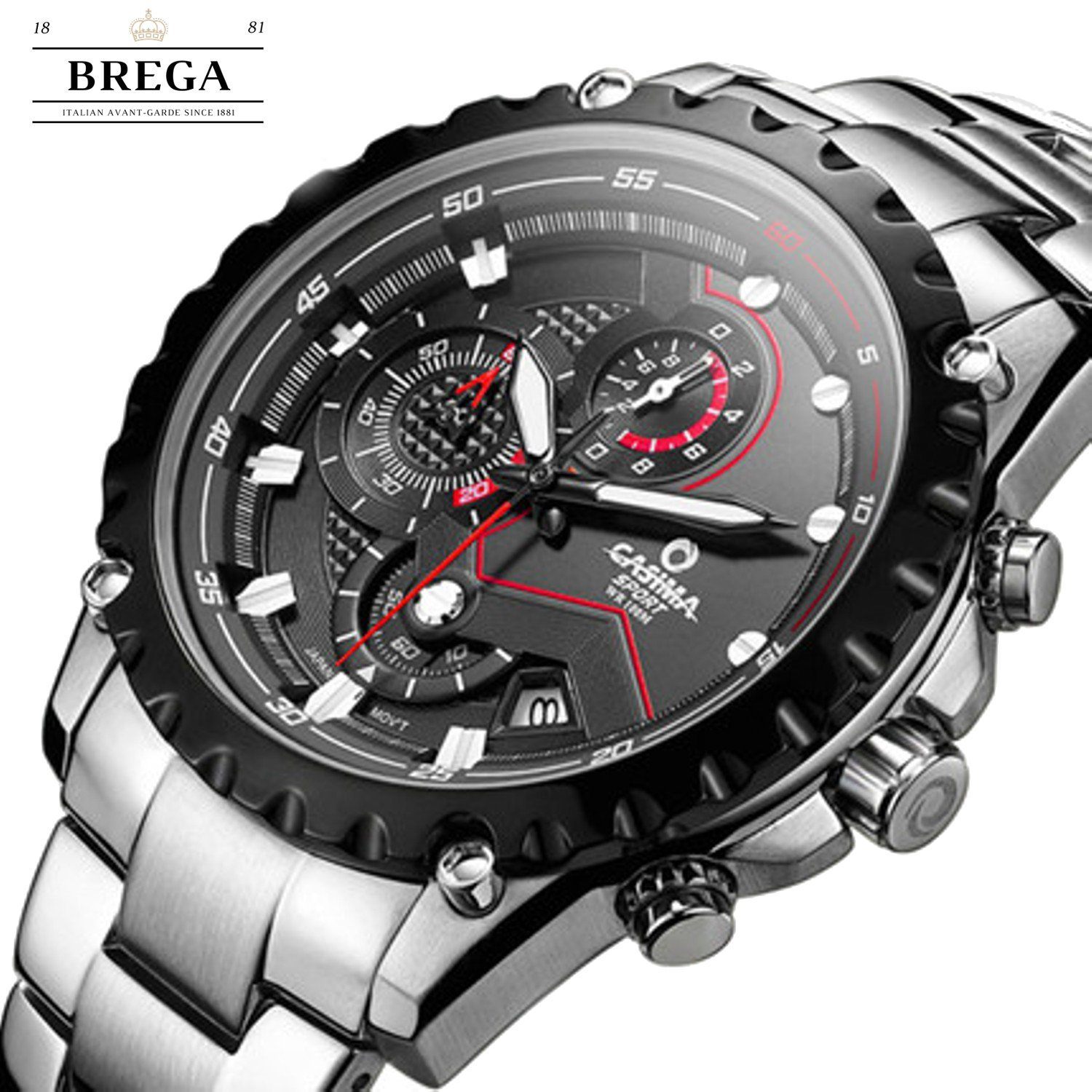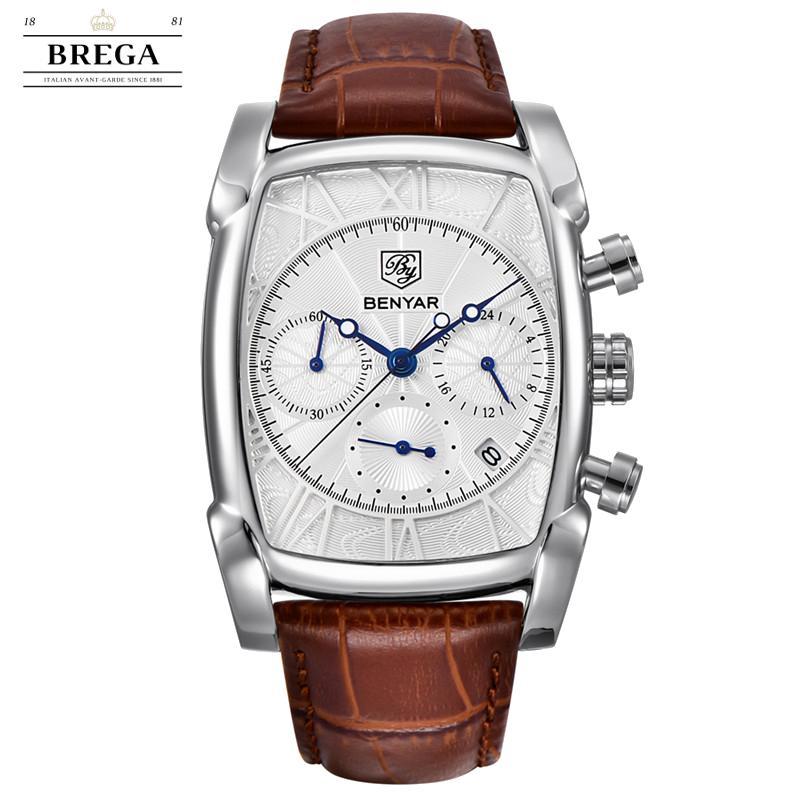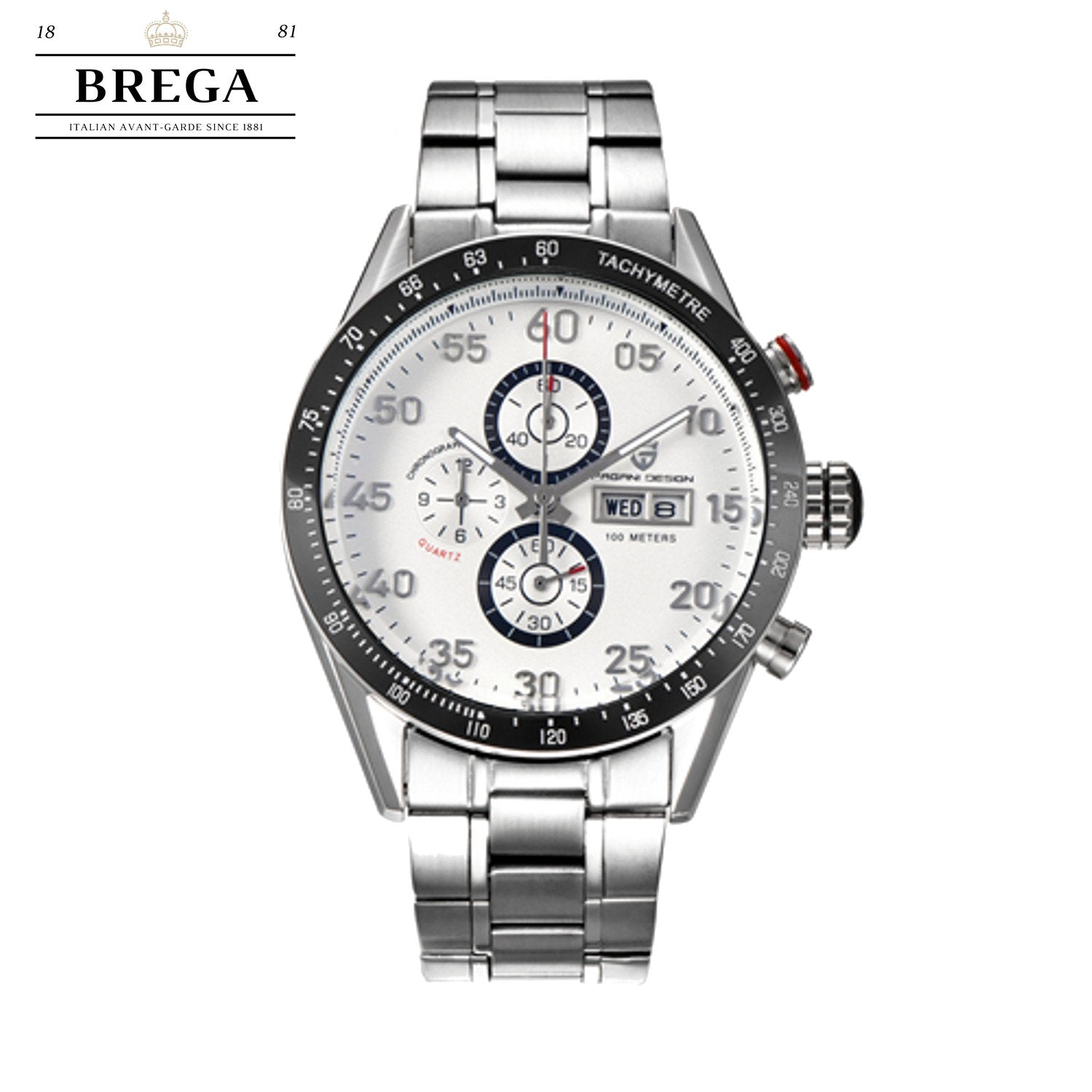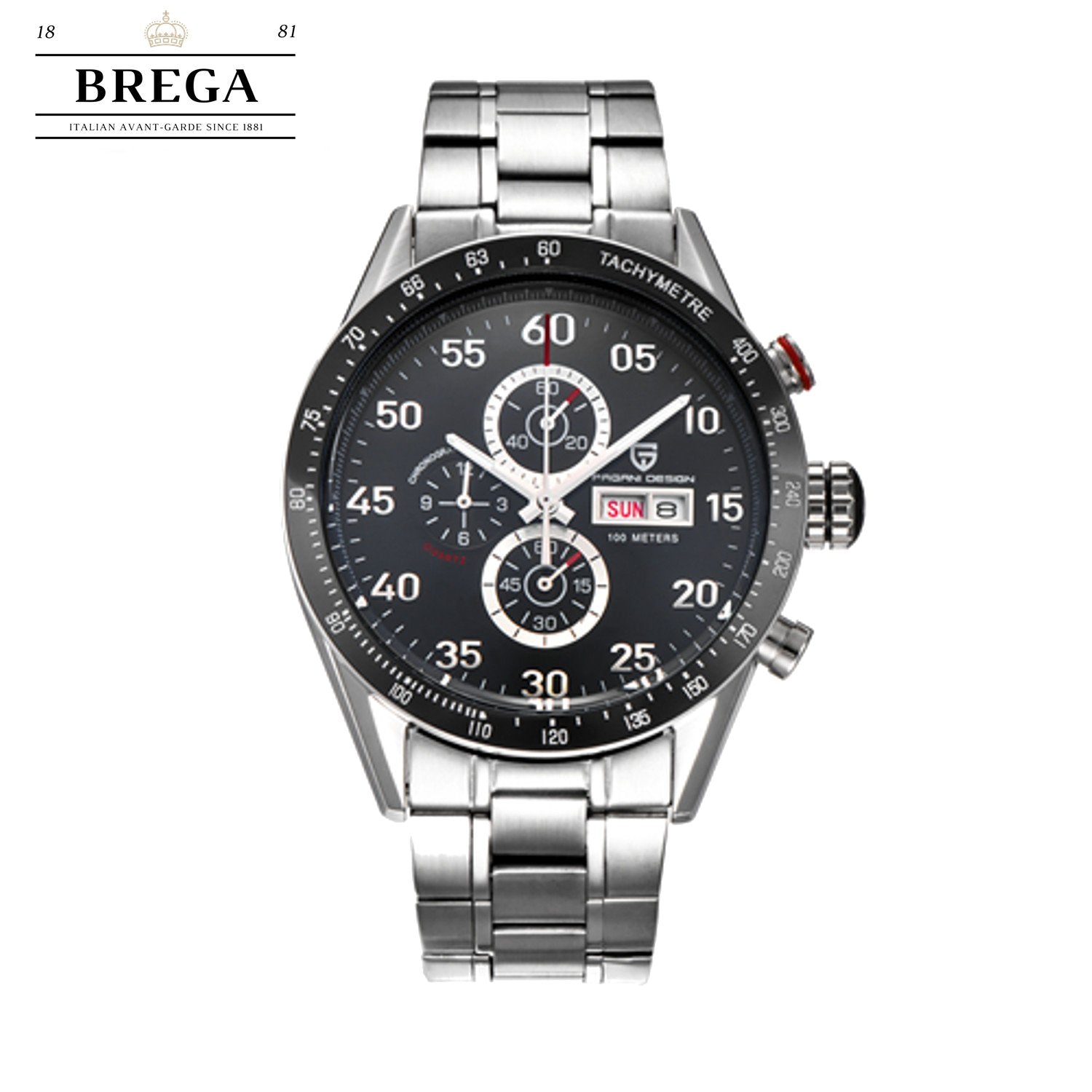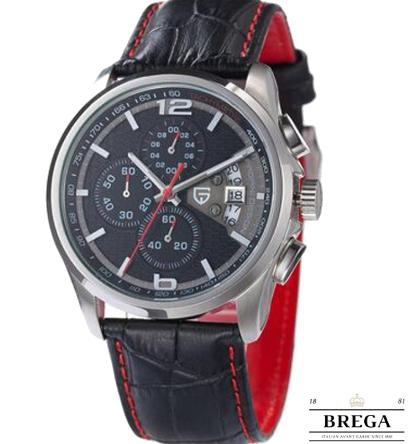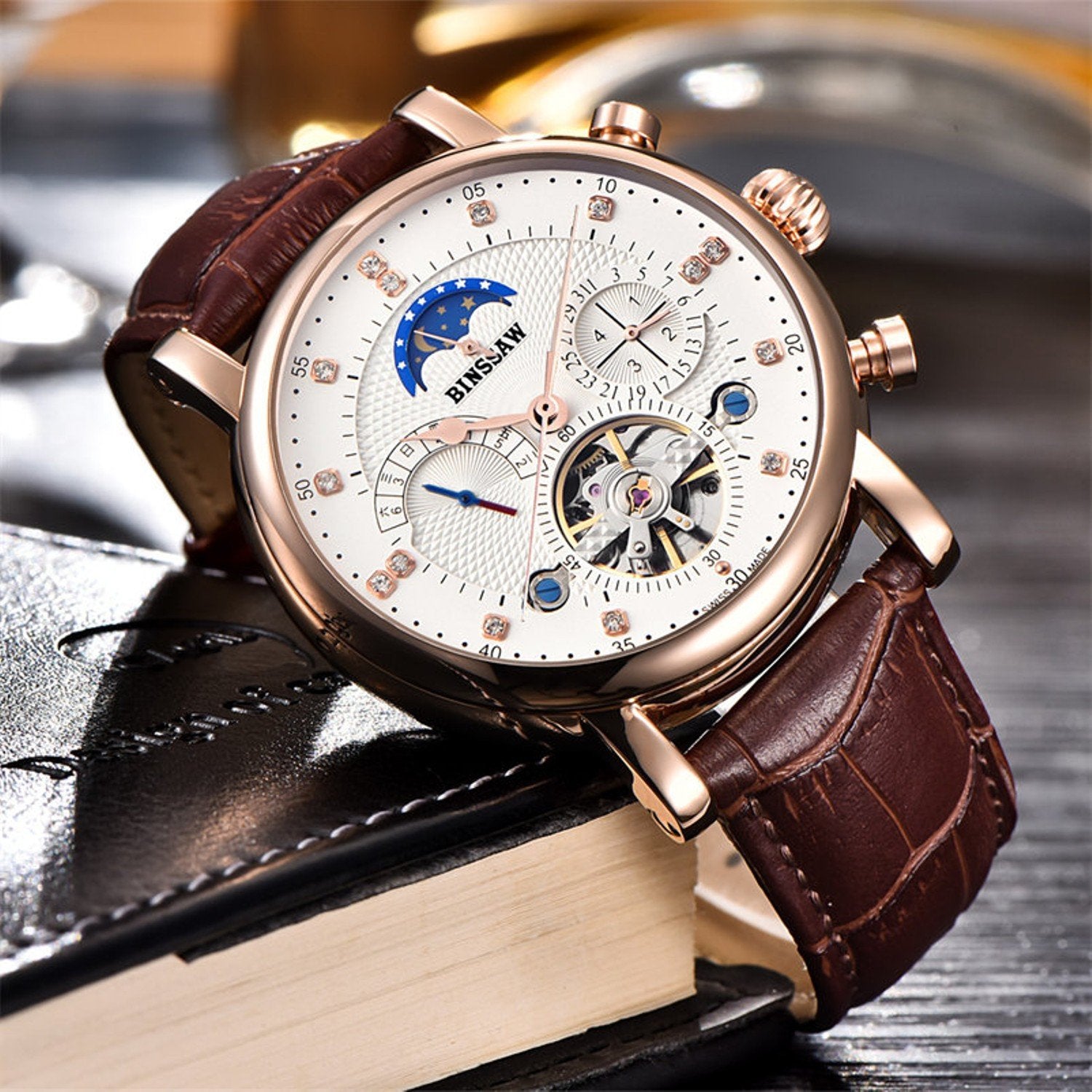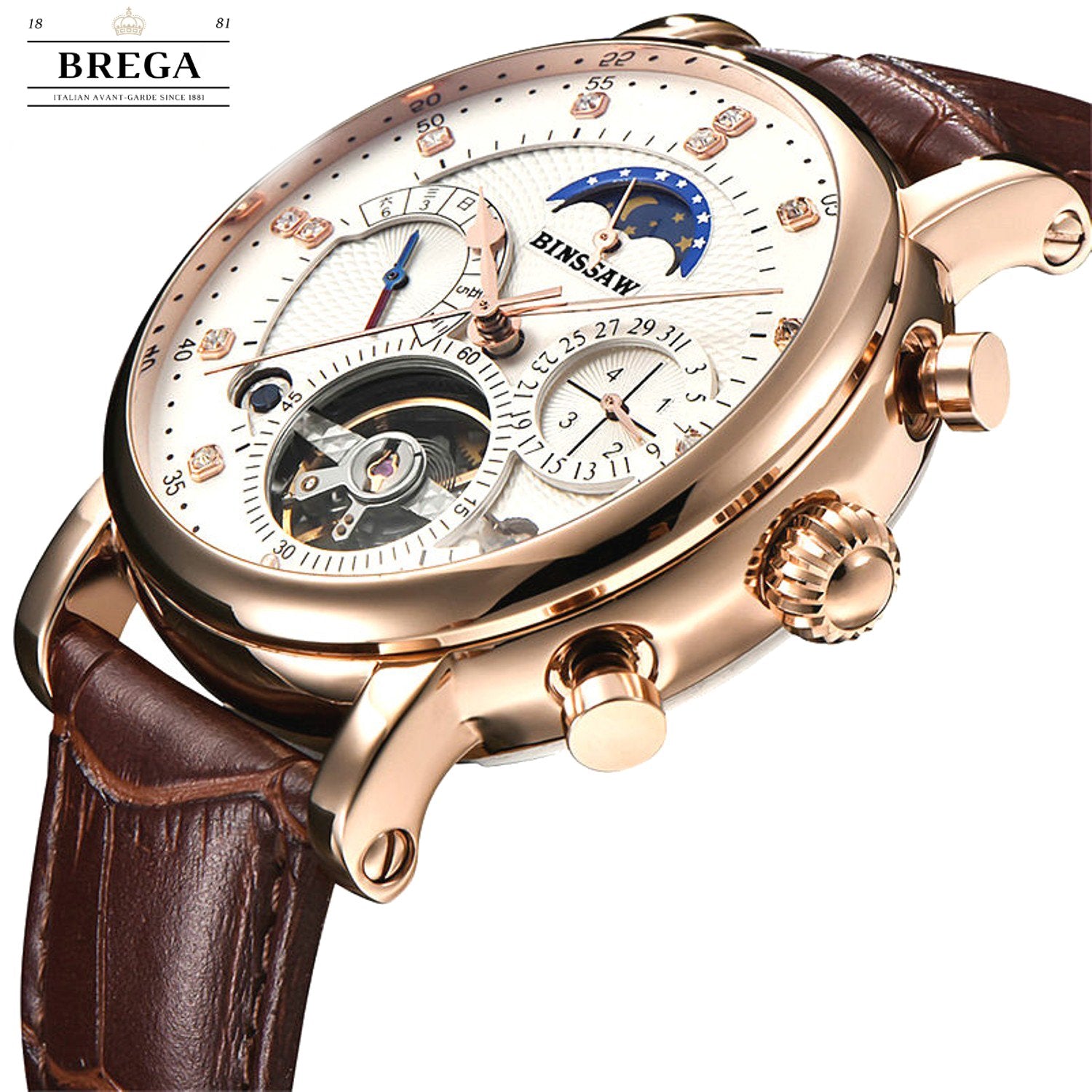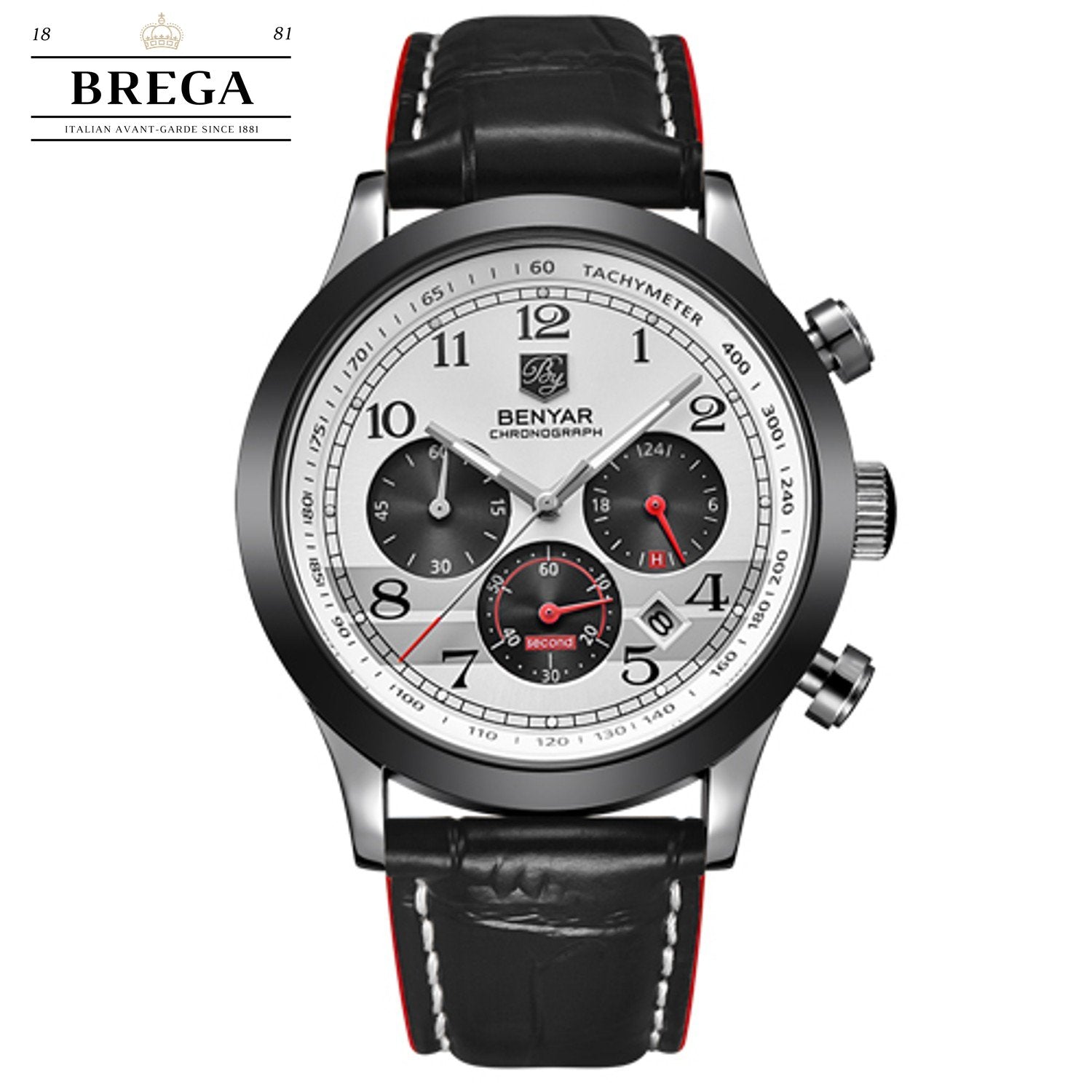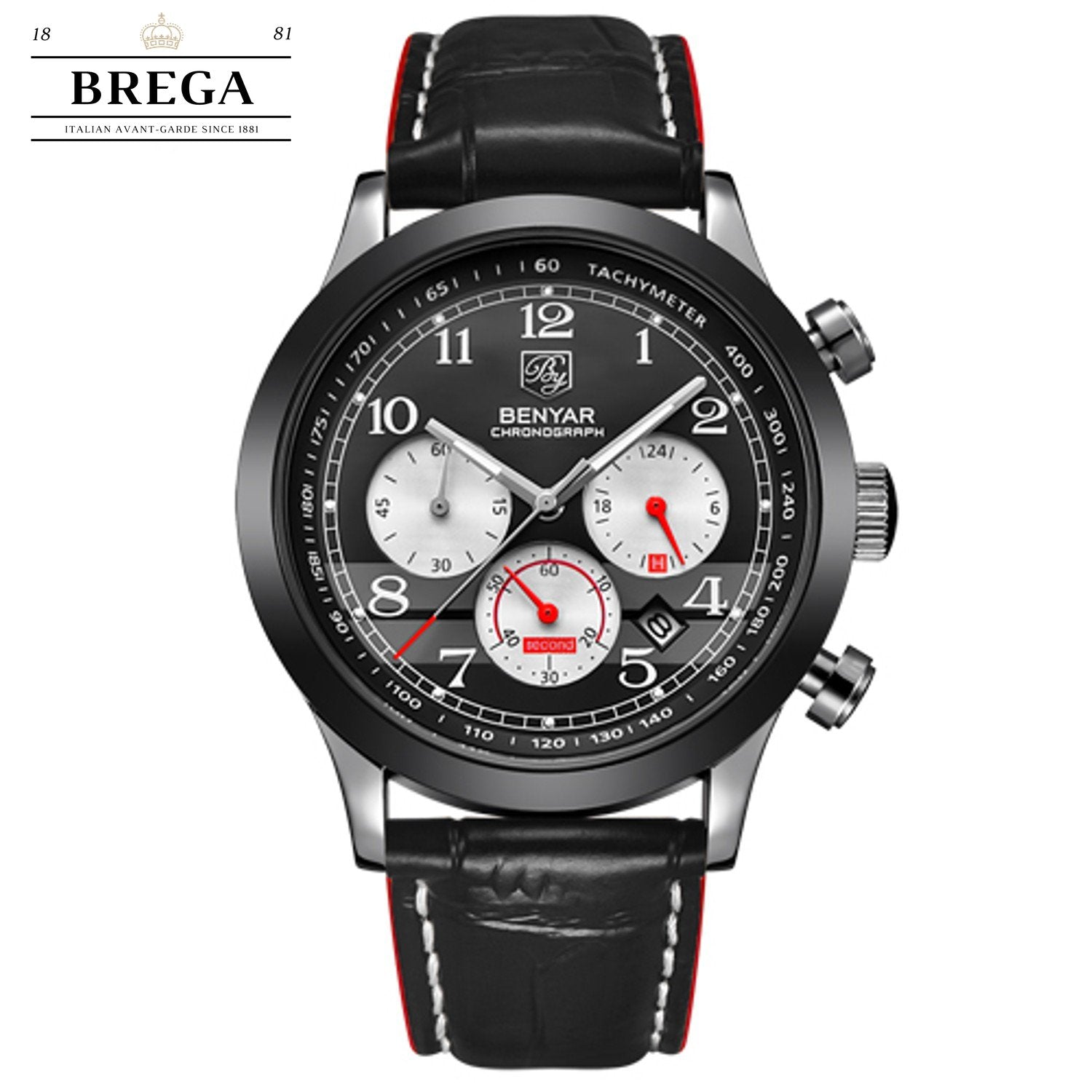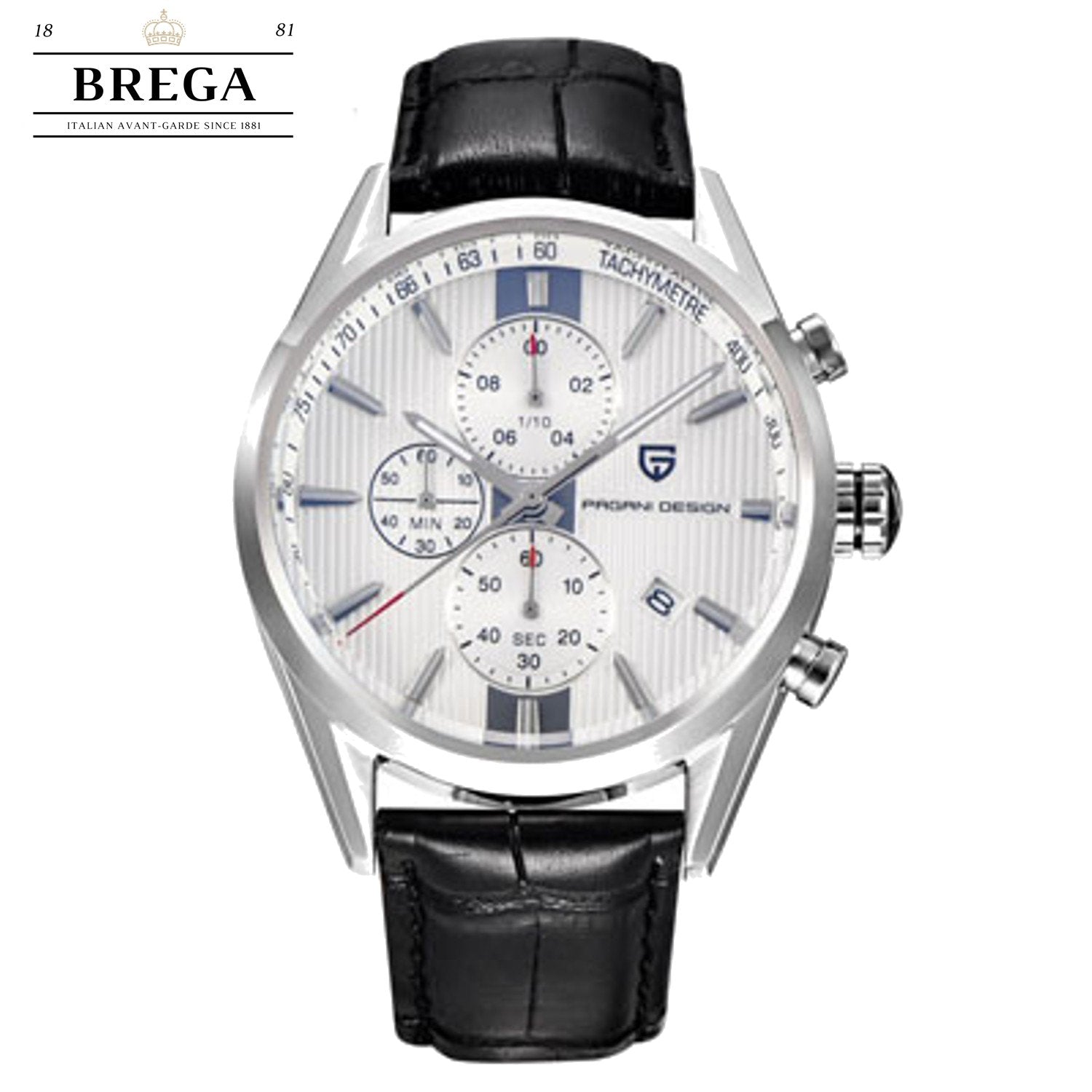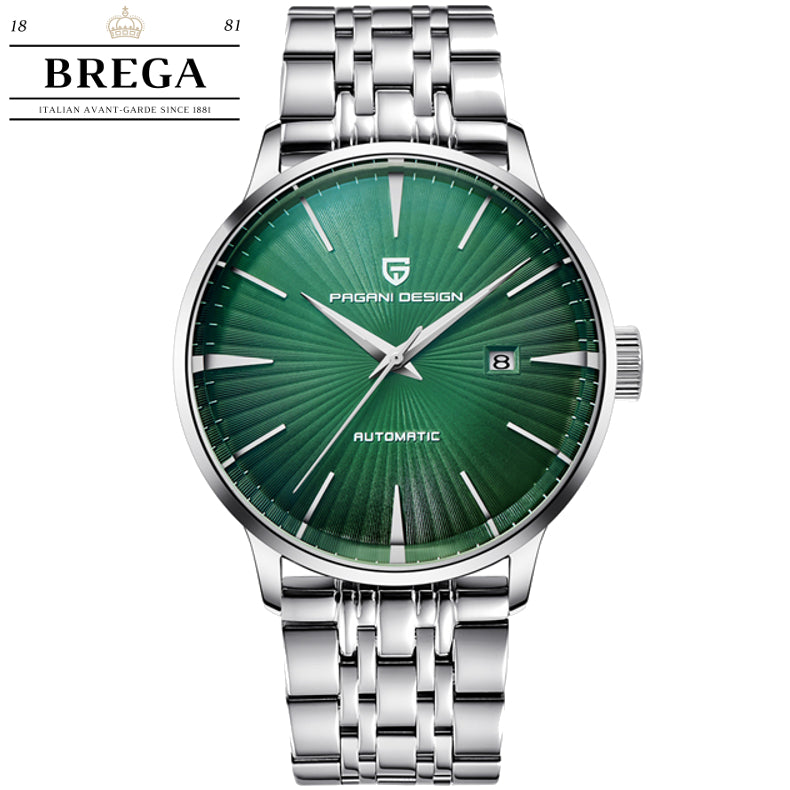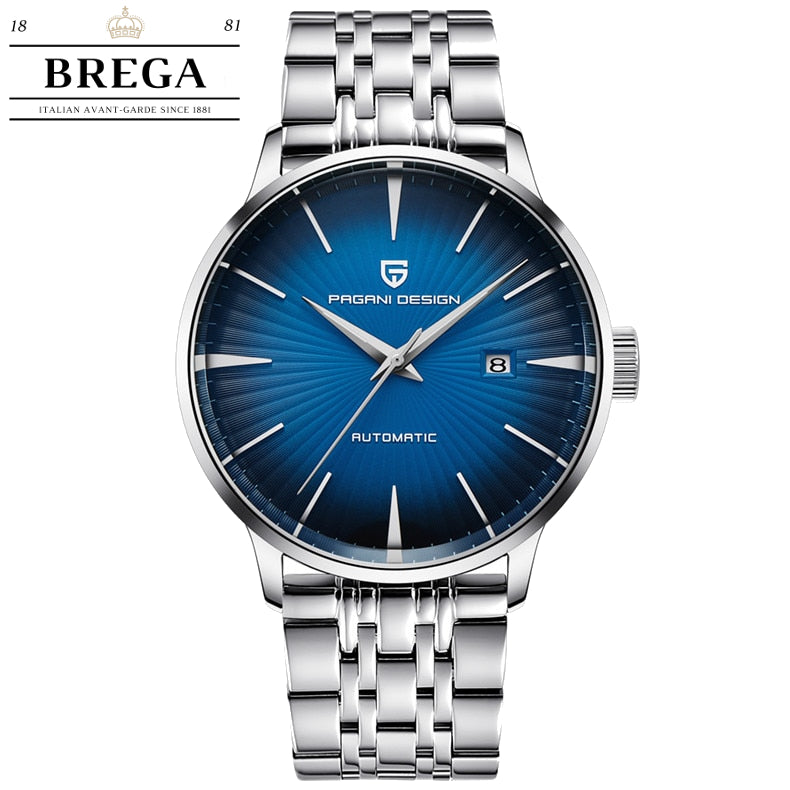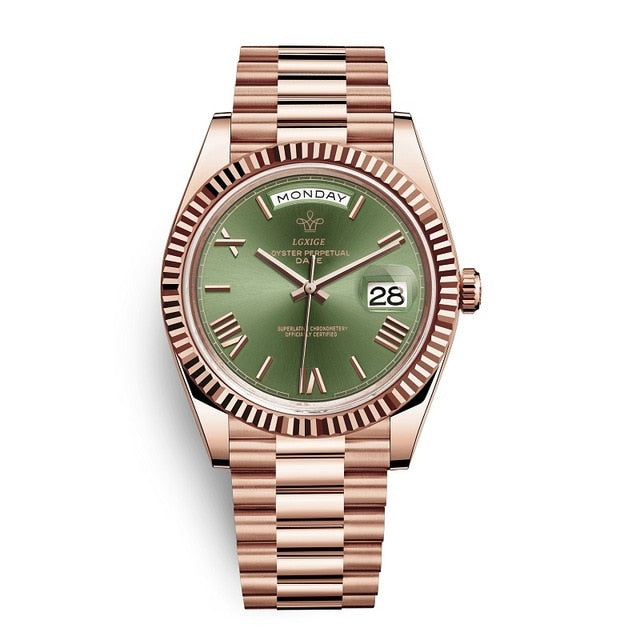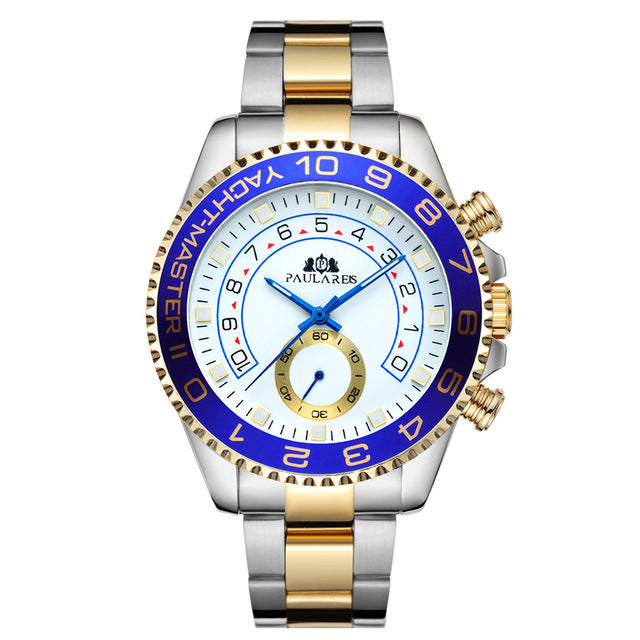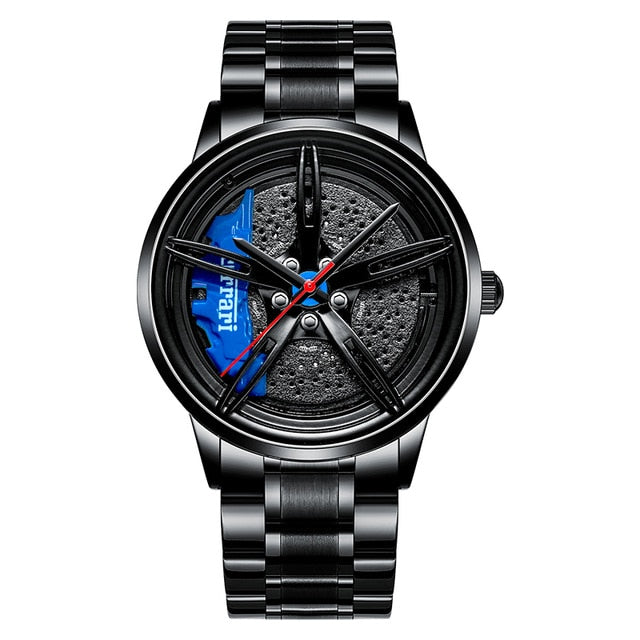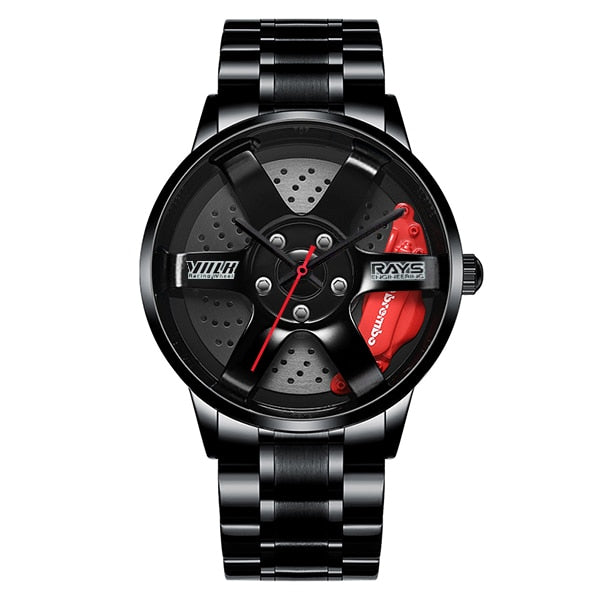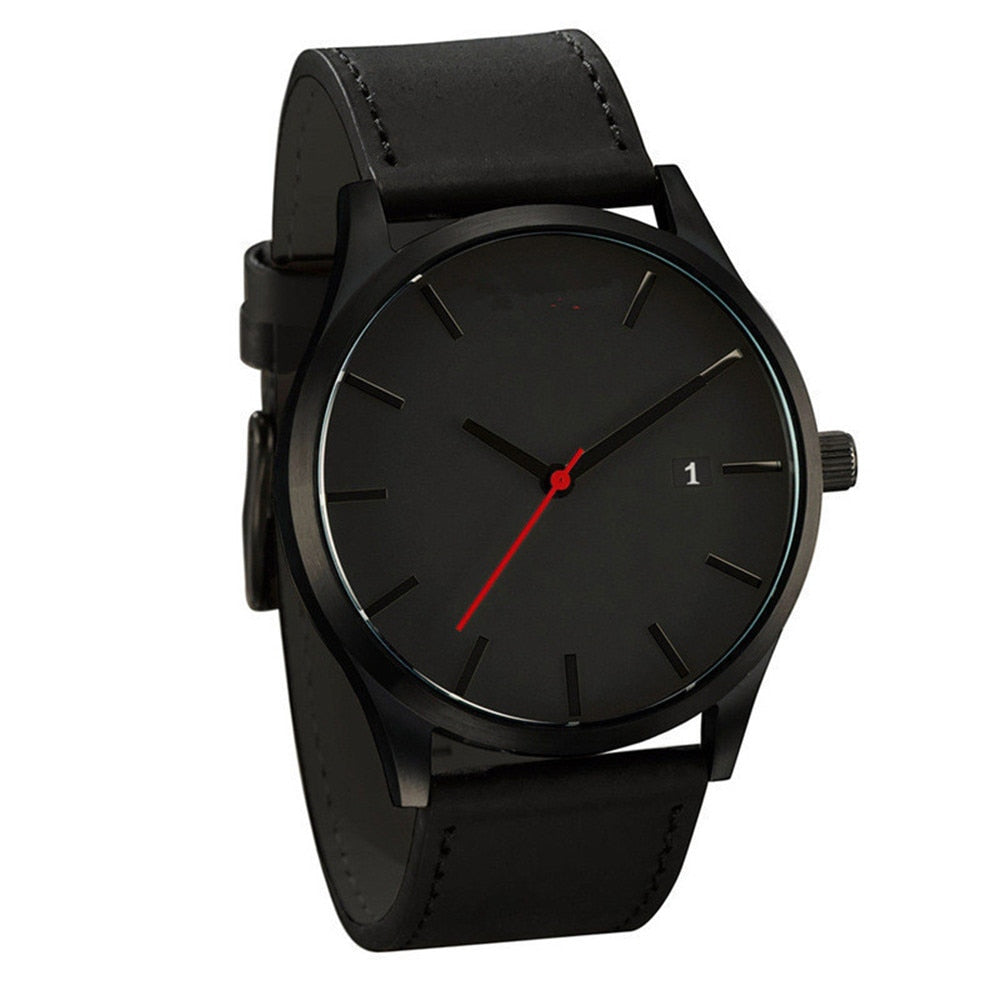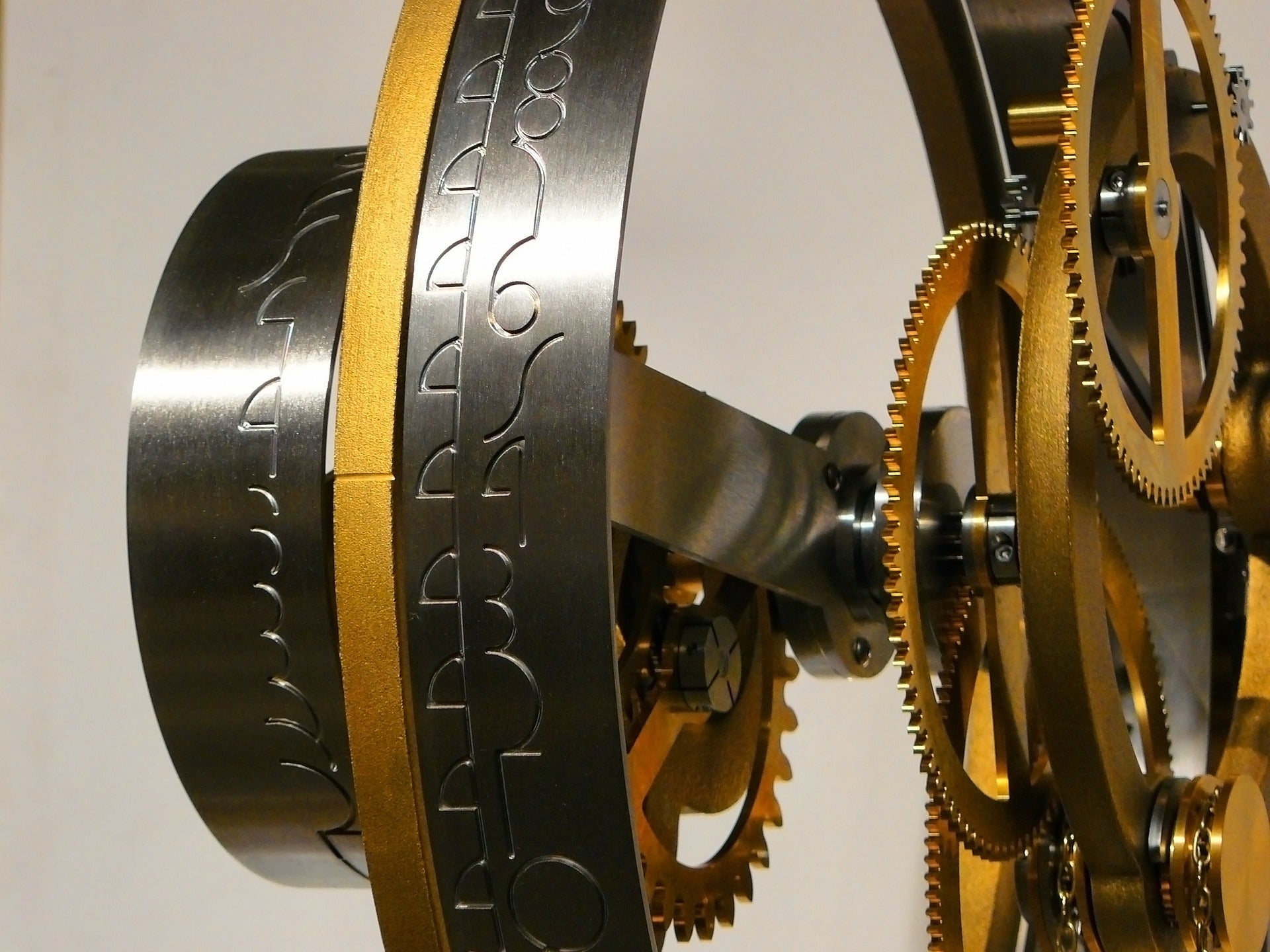
Originally an attempt to improve accuracy, tourbillons are still included in some expensive modern watches as a novelty and demonstration of watchmaking virtuosity.
A Tourbillon watch like our E601 BELLINI has a reason to be expensive, a tourbillon is an addition to the mechanics of a watch escapement. Developed around 1795 and patented by the French-Swiss watchmaker Abraham-Louis Breguet on June 26, 1801, a tourbillon aims to counter the effects of gravity by mounting the escapement and balance wheel in a rotating cage, to negate the effect of gravity when the timepiece (thus the escapement) is stuck in a certain position. By continuously rotating the entire balance wheel/escapement assembly at a slow rate (typically about one revolution per minute), the tourbillon averages out positional errors.
The mechanism is usually exposed on the watch's face to show it off.In the late 1700s, famed watchmaker Abraham-Louis Breguet came to the realization that gravity was having ill effects on the accuracy of his timepieces. Horology at the time was confined to the pocket watch, which was constantly stored vertically in the user’s pocket, then stored on a table horizontally. Spending the majority of its time stuck in that vertical and horizontal orientation put strain on the hairspring inside the escapement, causing it to oscillate at an irregular rate, decreasing the accuracy of the watch.
Breguet’s solution was to create an escapement that was constantly in a state of motion. Called the tourbillon (French for “whirlwind”), the escapement is housed in a rotating cage that, because of the constant motion, averages out the effect of gravity when the watch is stuck in different positions. Breguet’s invention worked for the pocket watch. But wristwatches, with the wrist’s constant movement, naturally offer the same gravity-fighting effect as the tourbillon mechanism. In fact, it has been proven that tourbillons are not any more accurate than a traditional escapement on a wristwatch, and are in some cases even less so.
In spite of the tourbillon’s uselessness, they’ve remained common among the uppermost echelon of the watch market. Most Swiss-made examples start at around $40,000 and price tags often break the six-figure barrier. This is because tourbillons are arguably one the most difficult movement to make by hand. The tourbillon mechanism is tiny, weighing in at under a gram, and is usually crafted with more than 40 parts, finished by hand and made from lightweight metals like aluminum and titanium. They require a special set of tools and a lot of time to make. For example, just to make a single A. Lange & Söhne Tourbograph Pour le Merite, its tourbillon chronograph movement takes 18 months.
So, it was a dazzling moment for the watch industry when in January 2016 TAG Heuer introduced the Heuer-02T, a tourbillon chronograph that became the cheapest Swiss-made tourbillon on the market; it costs $15,000.
It seems TAG Heuer has found a way to make the tourbillon “affordable.” Visually, the tourbillon inside the Heuer-02T is simpler and lacks the polishing of more astronomically priced tourbillons from haute horology brands like A. Lange & Söhne, DeWitt or Girard-Perregaux. TAG Heuer said it cut down the cost of tourbillon manufacturing through “the perfect mastery of industrial processes and manufacturing costs.”
In spite of the tourbillon’s uselessness, they’ve remained common among the uppermost echelon of the watch market.
TAG hasn’t disclosed what specifically that “mastery” is, but the company isn’t the only one to make tourbillon manufacturing cost effective. In the past decade or so, manufacturers of calibers in China have managed to create even more affordable tourbillon movements. Tianjin Seagull manufactures a three-hand tourbillon that retails for under $5,000. Meanwhile the Hangzhou Watch Company makes its own tourbillon movements that sell in watches like the AATOS Tiago for hundreds rather than thousands.
These manufacturers have been able to make affordable tourbillons by streamlining manufacturing and utilizing less traditional production processes. “Today we have production methods which allow us to produce spare parts in extremely high precision and acceptable quality,” independent haute watchmaker Thomas Prescher said in an interview with Europa Star. “So it is already possible to have extremely cheap tourbillons from the Far East for about $250.”
So, if the value of a tourbillon stems from the fact that it is essentially art — painstakingly crafted expressions of the pinnacle of watchmaking, even if they don’t have any real useful function — affordability comes at the cost of creating a less complex and less beautiful timepiece. It renders a mostly pointless movement entirely pointless.

